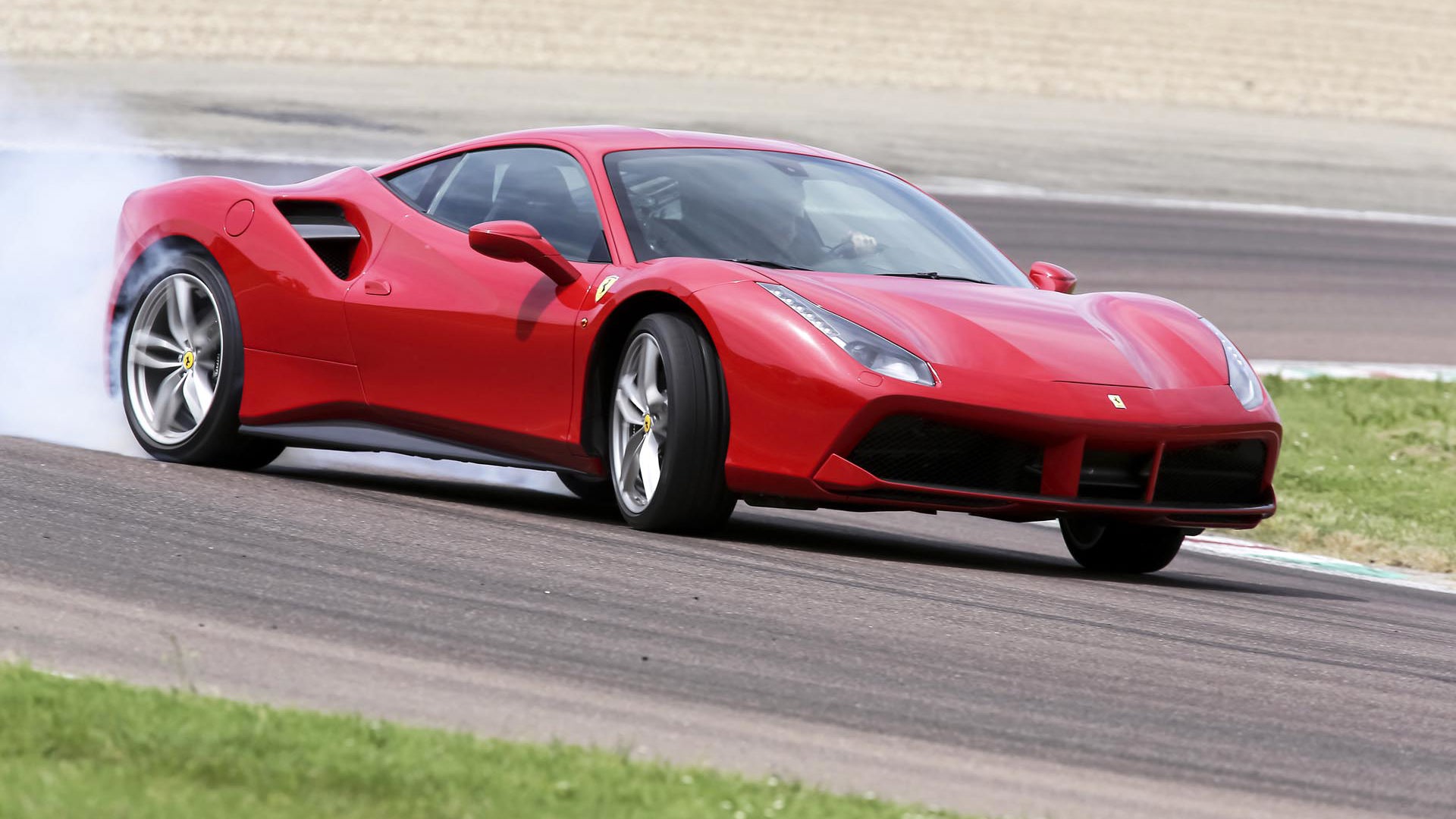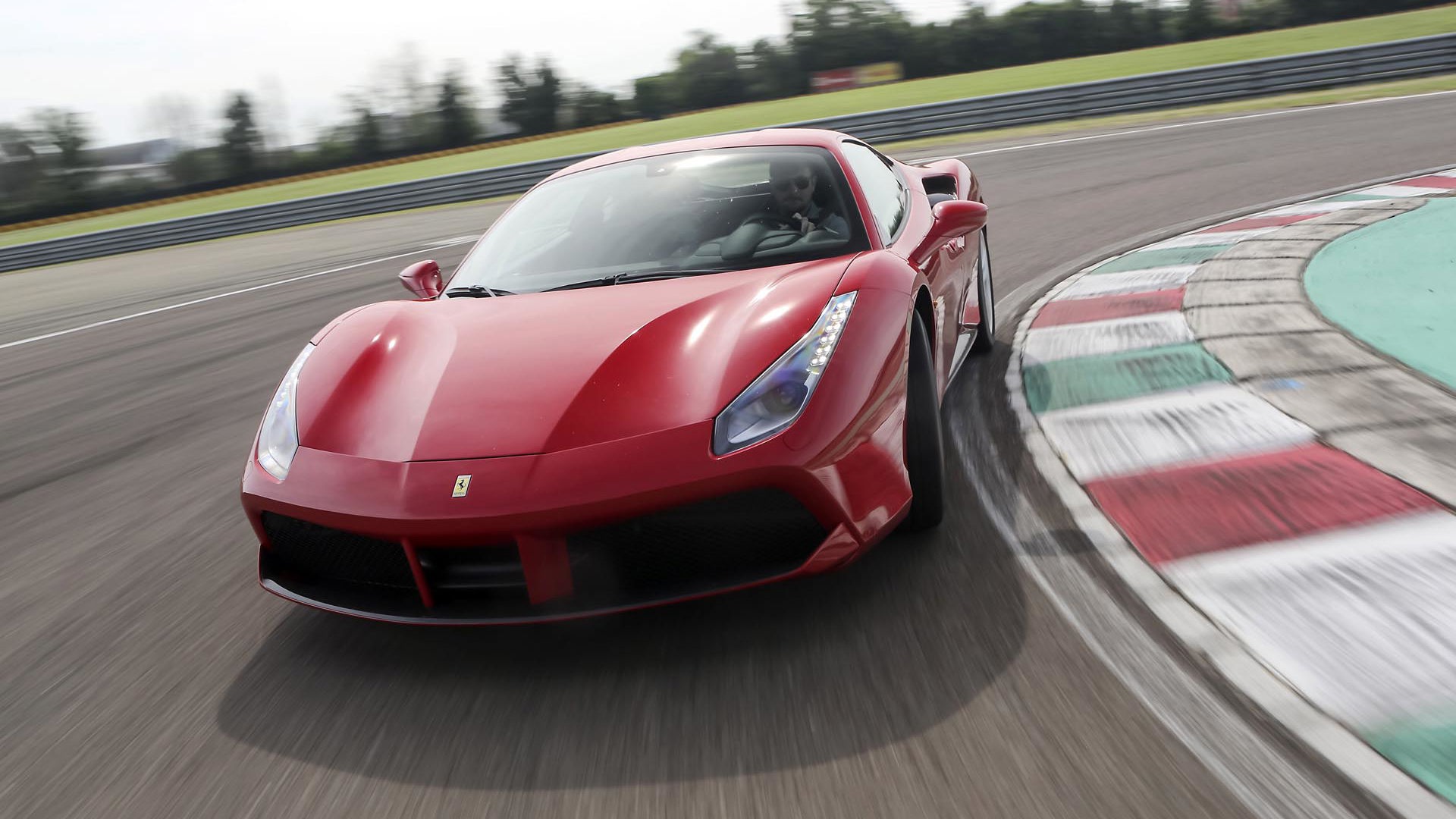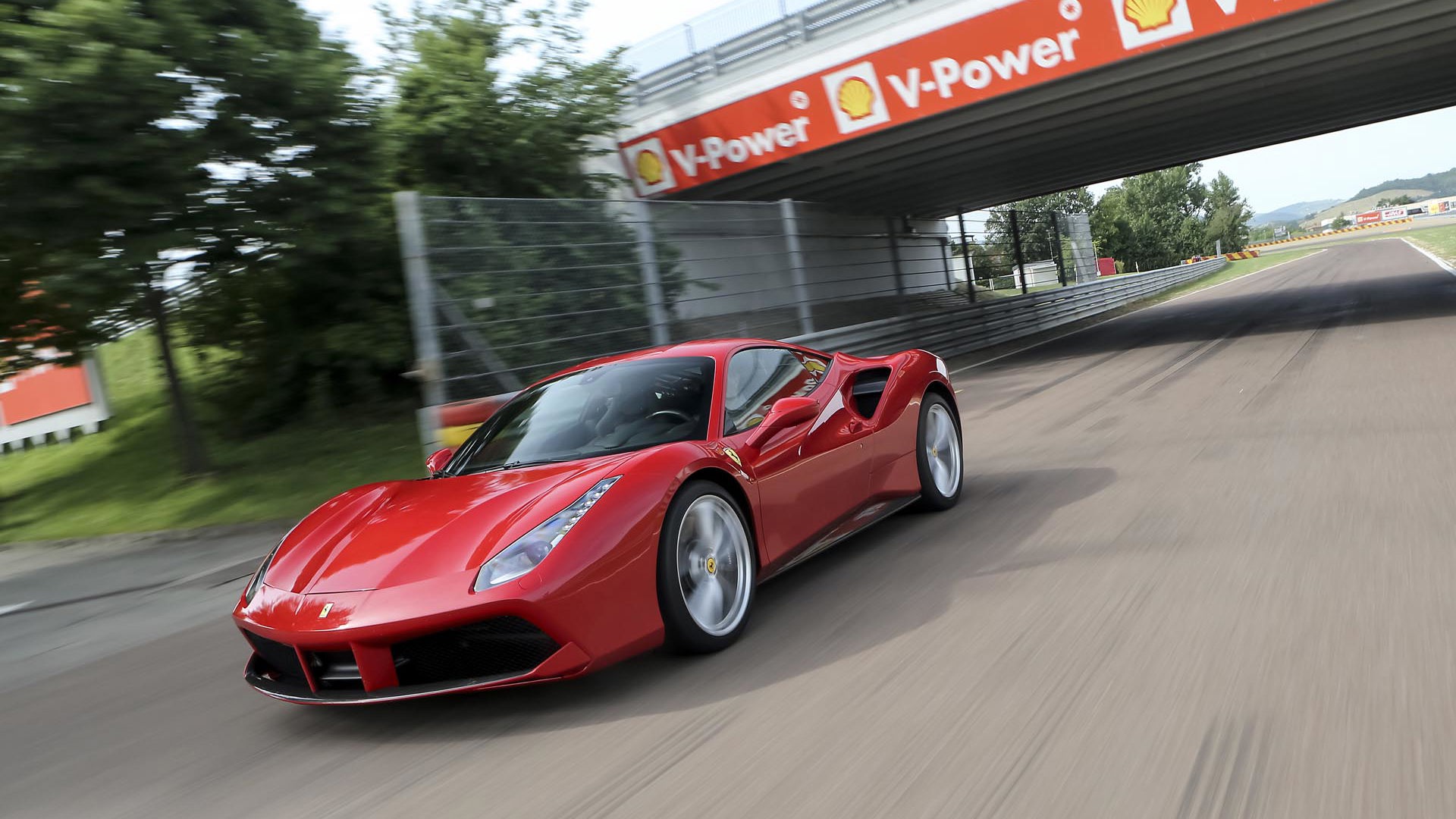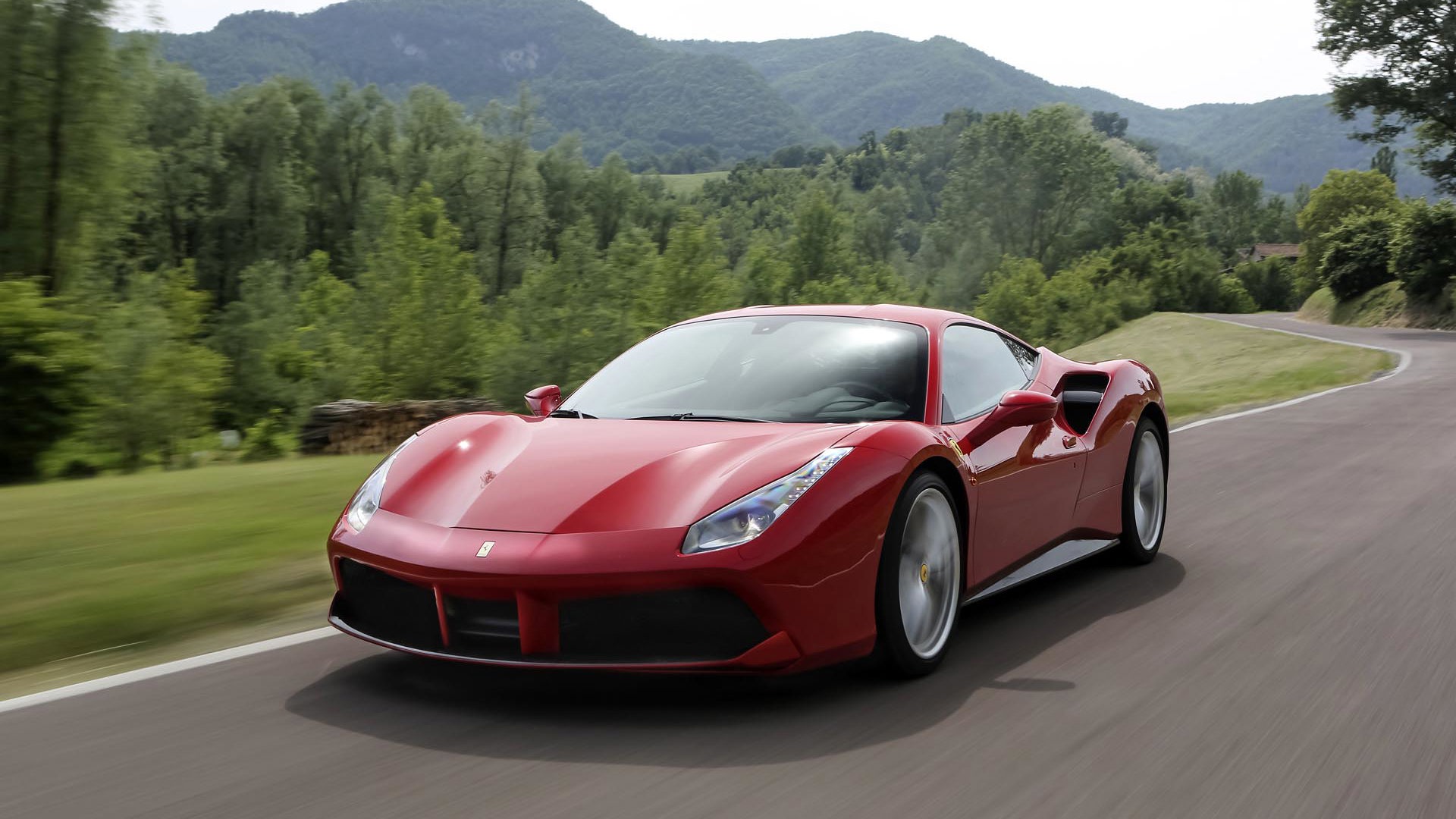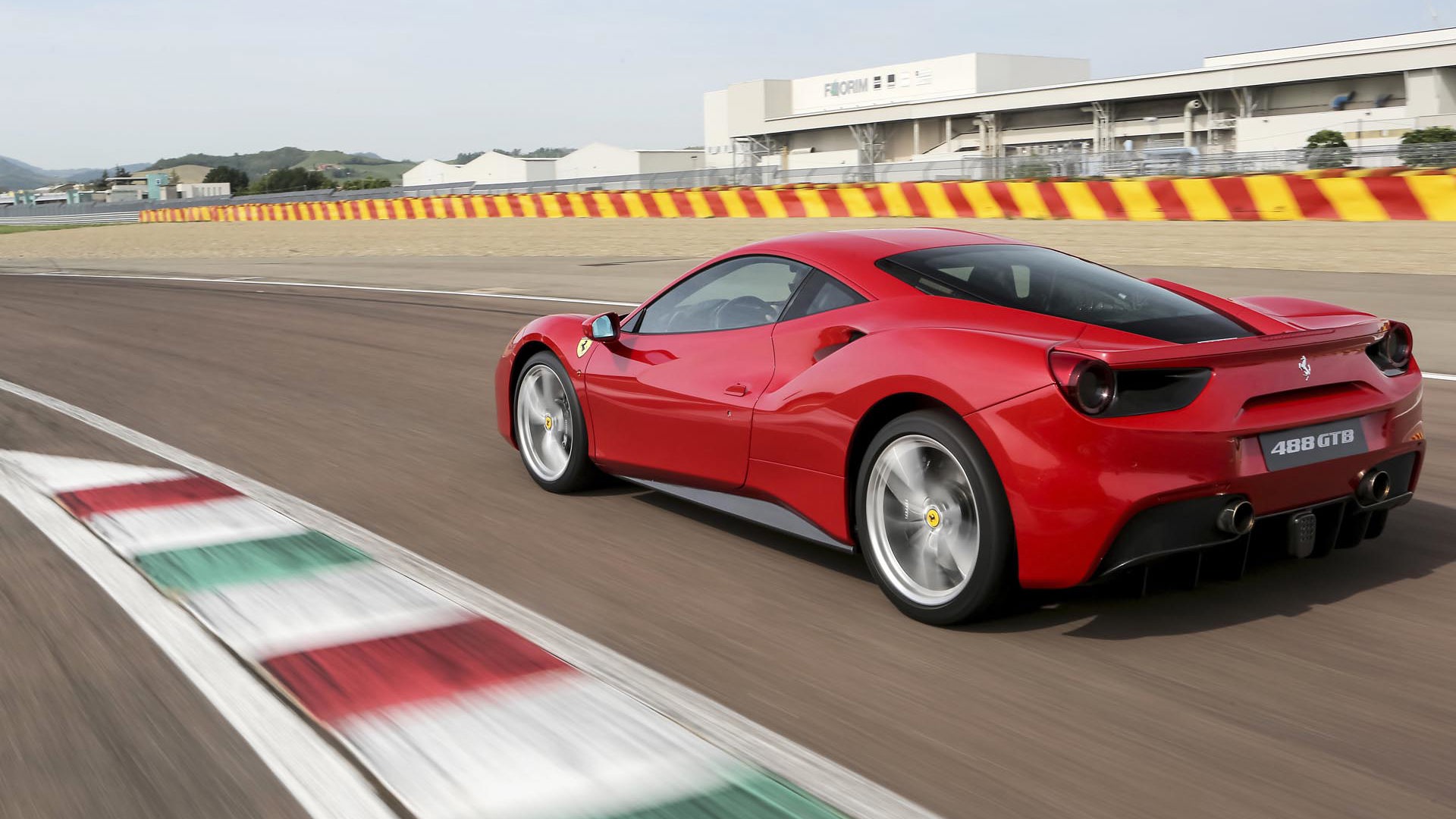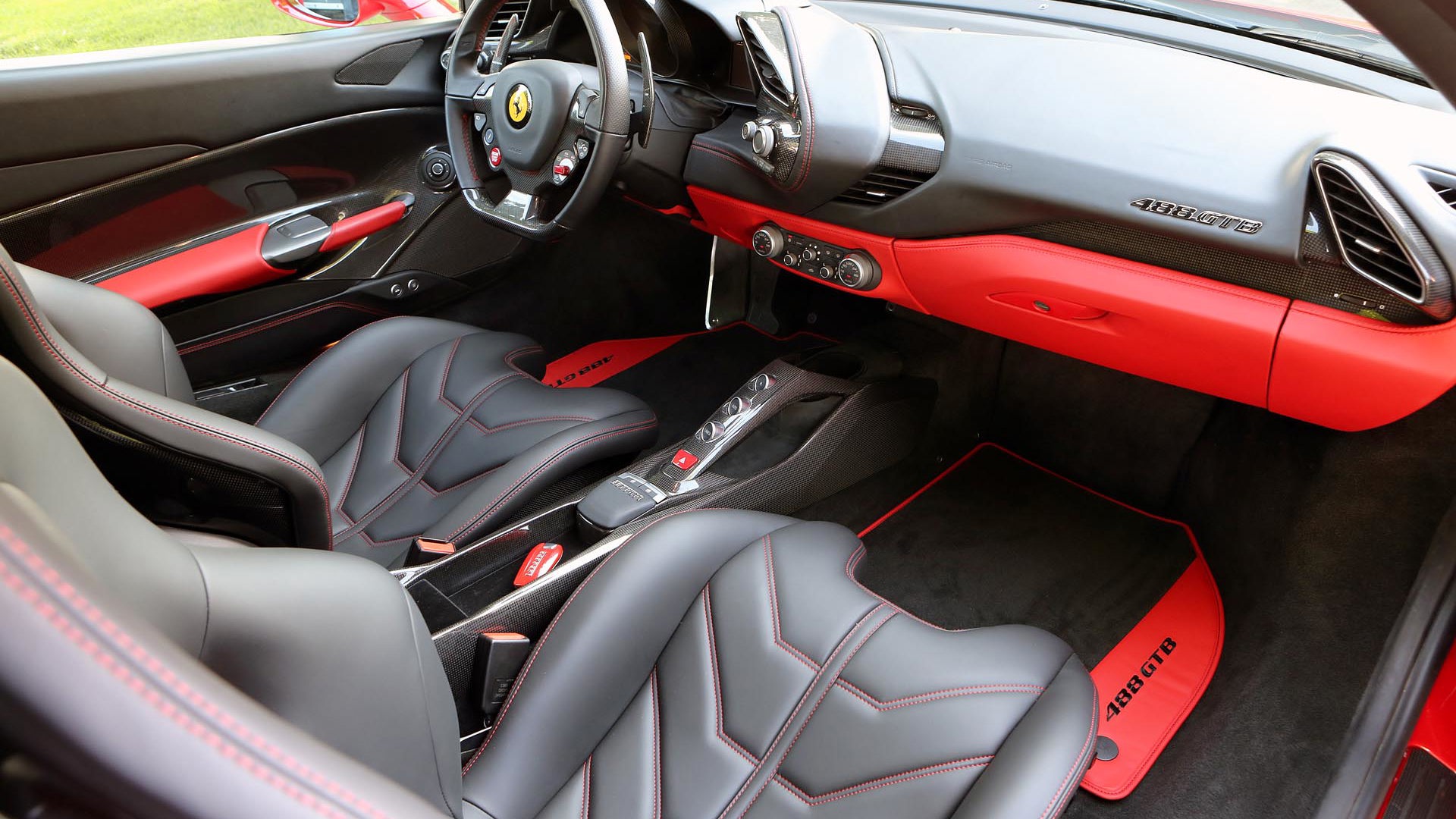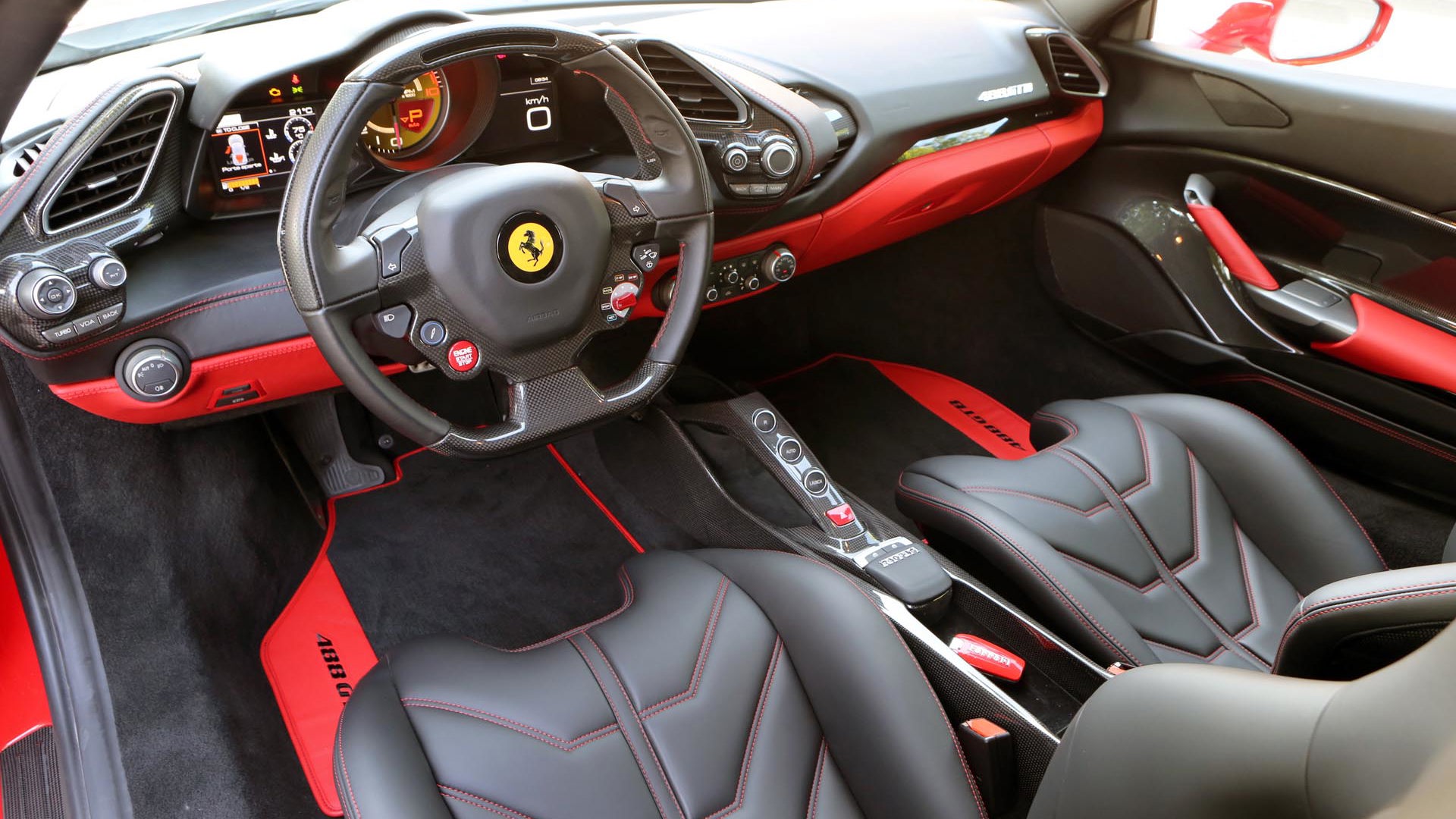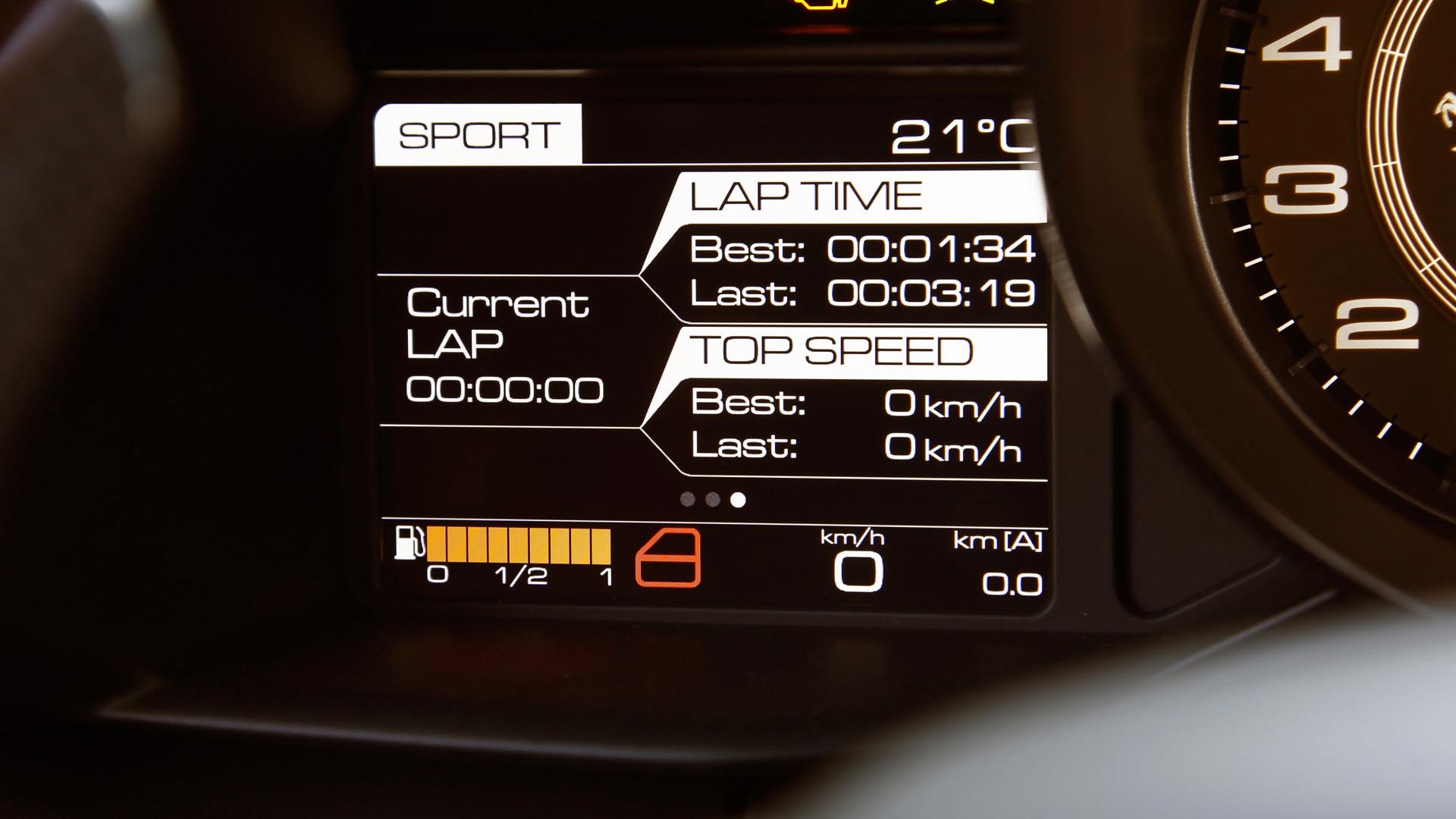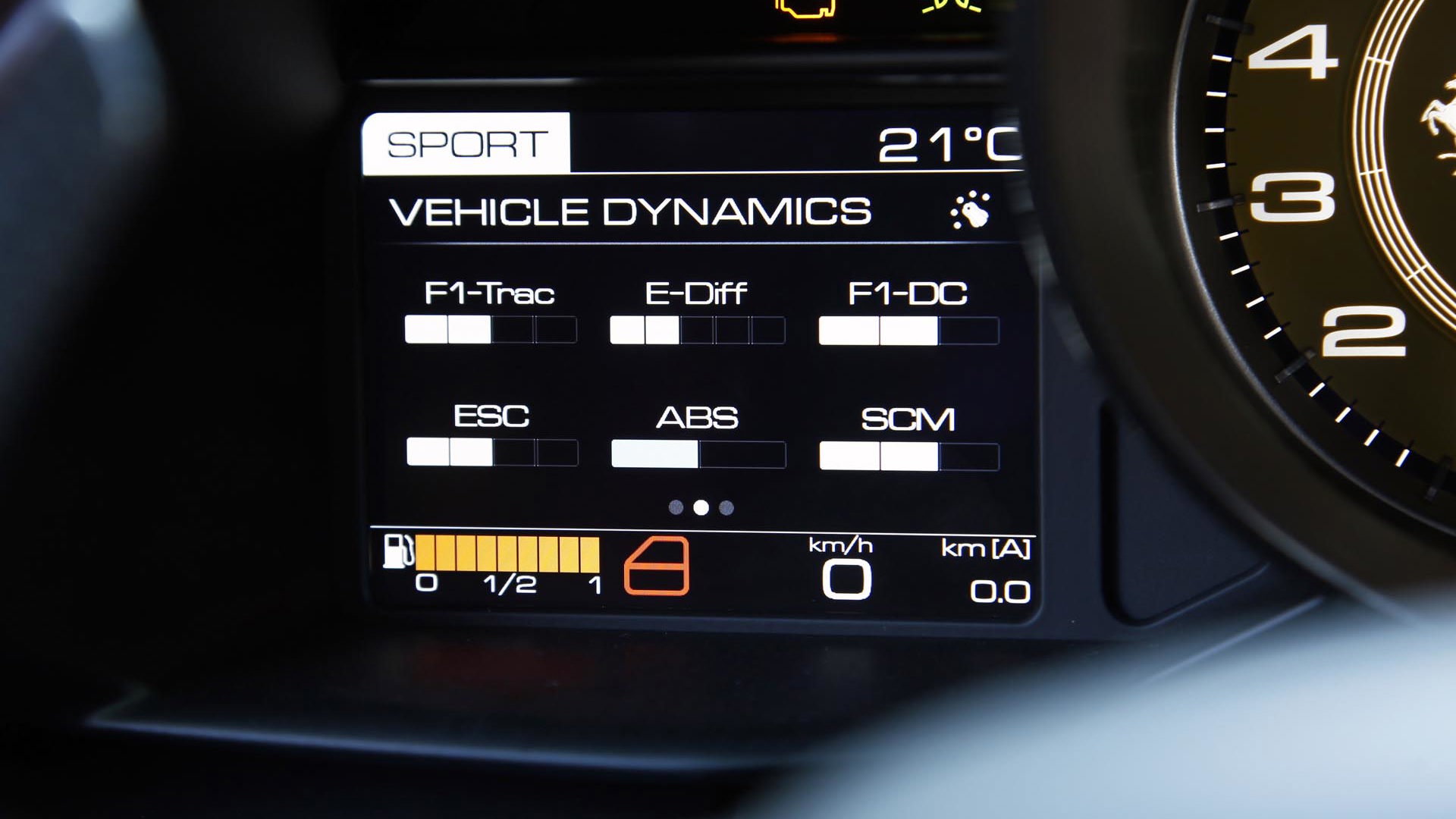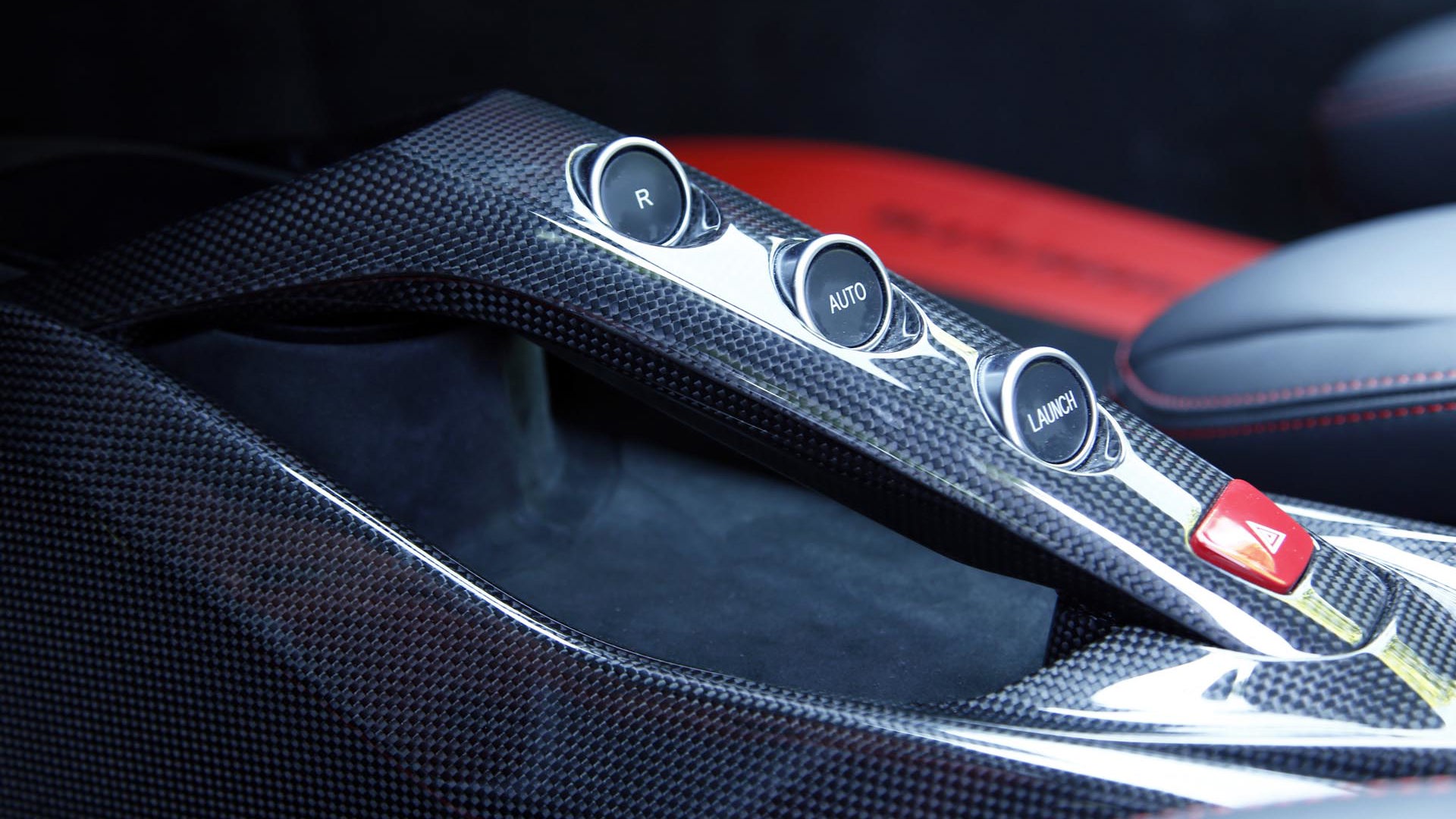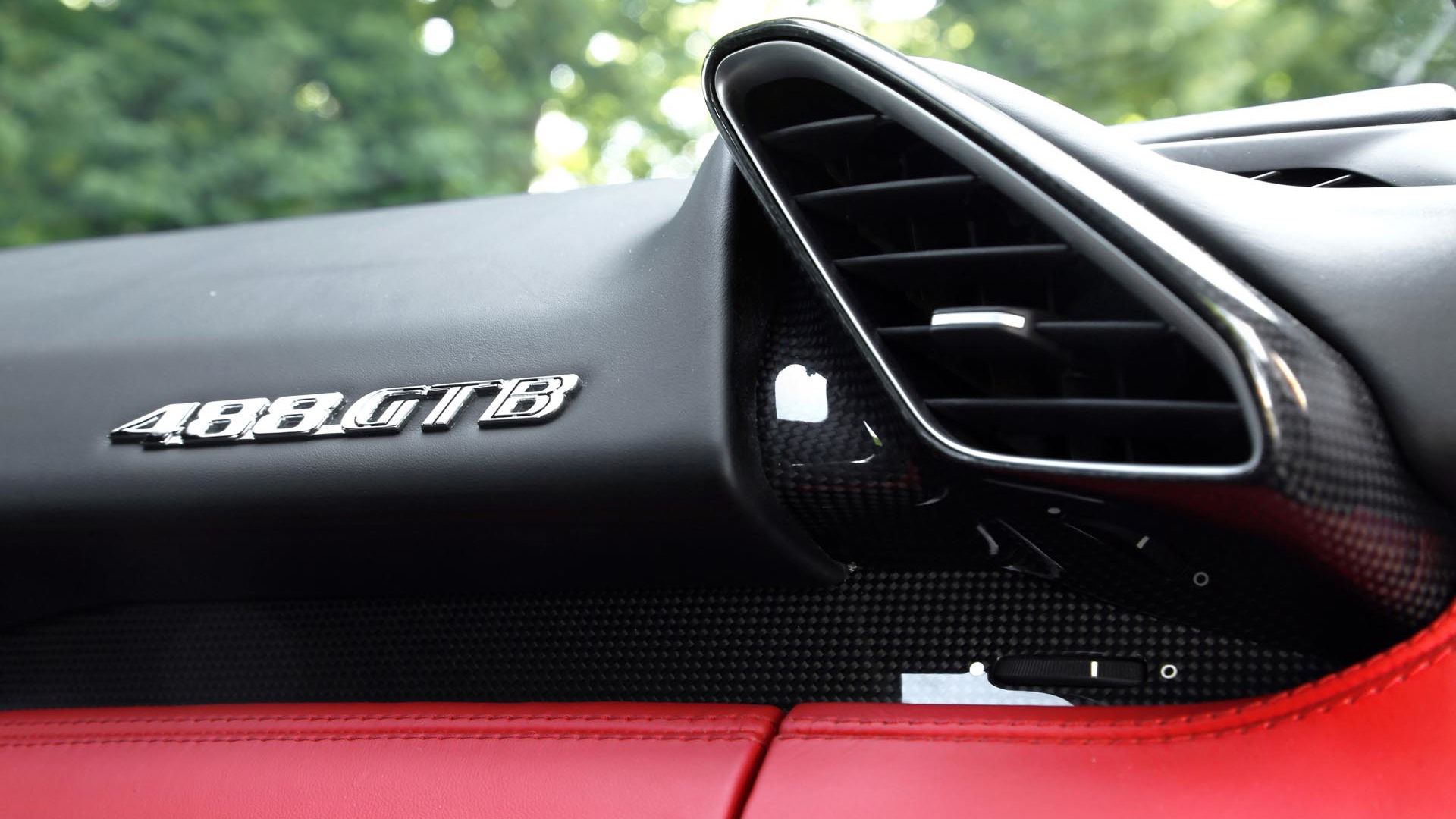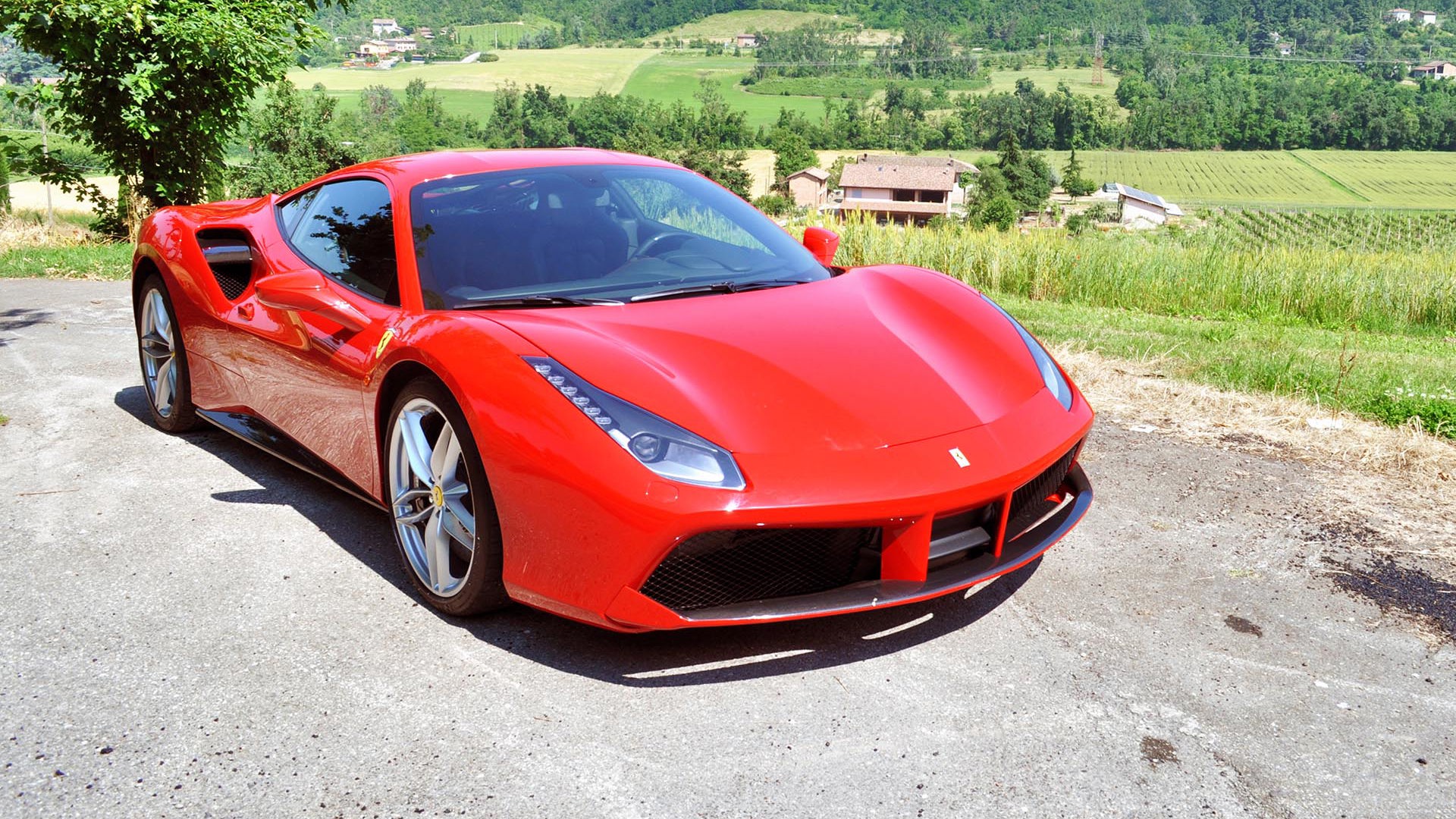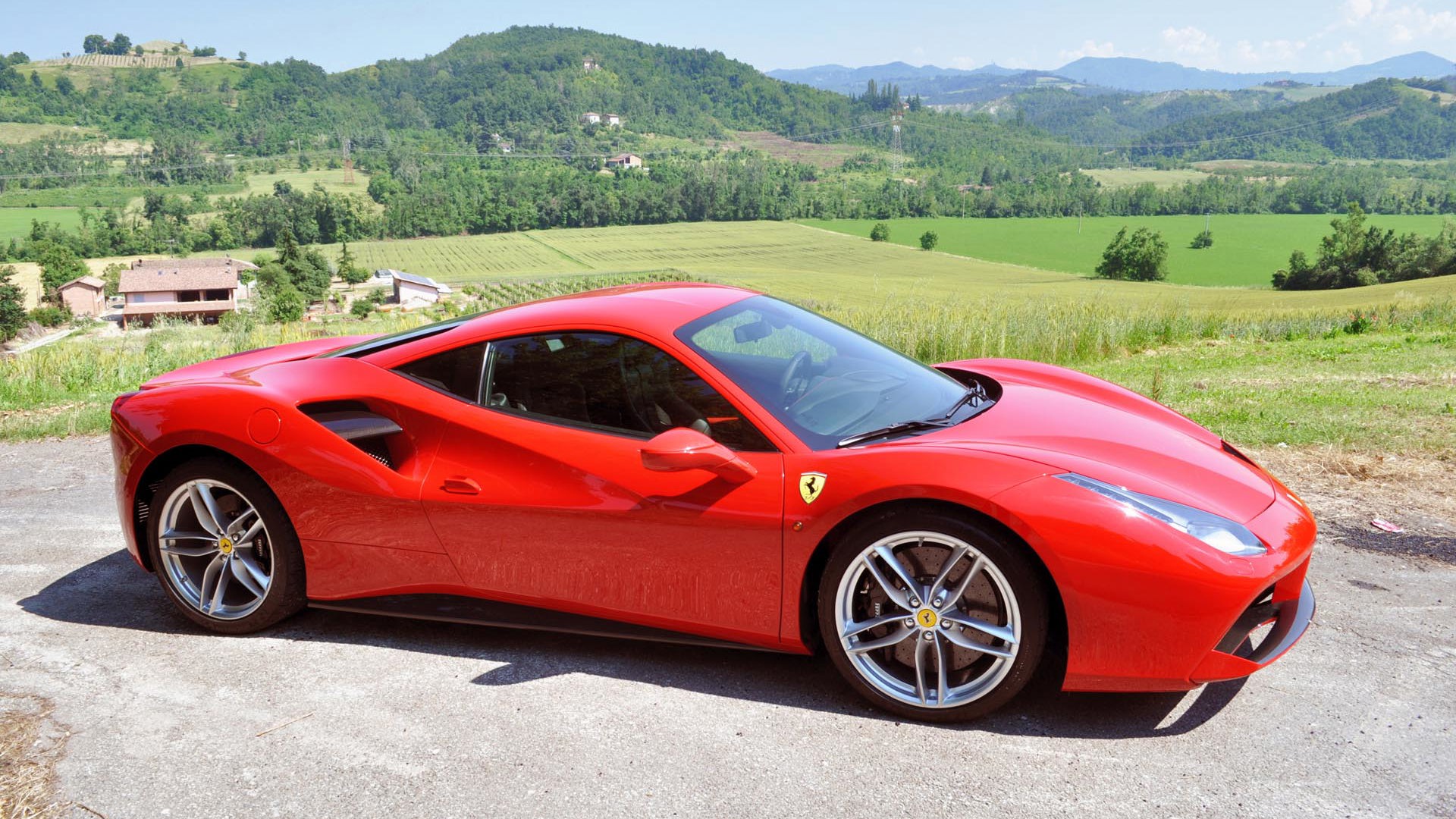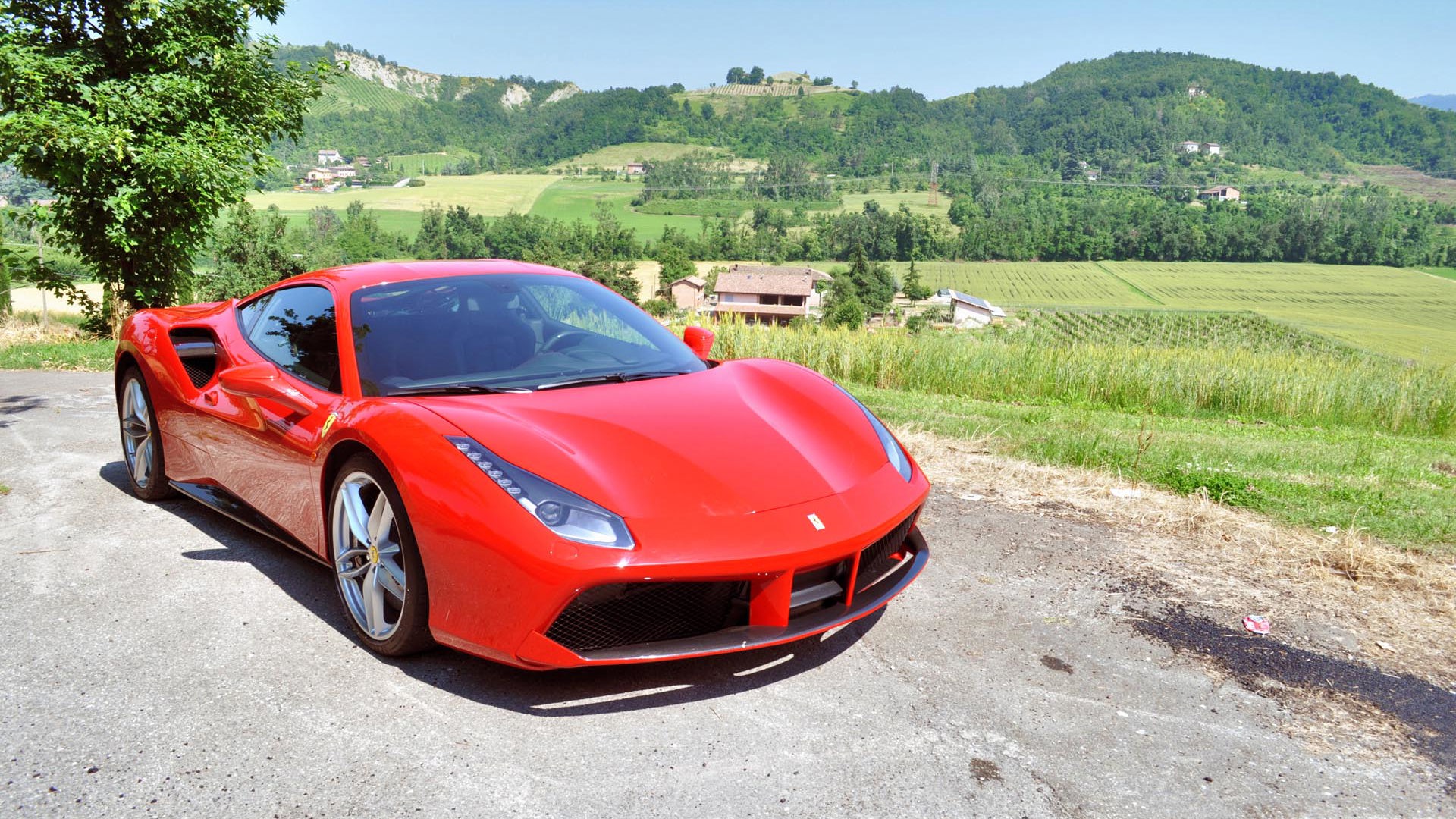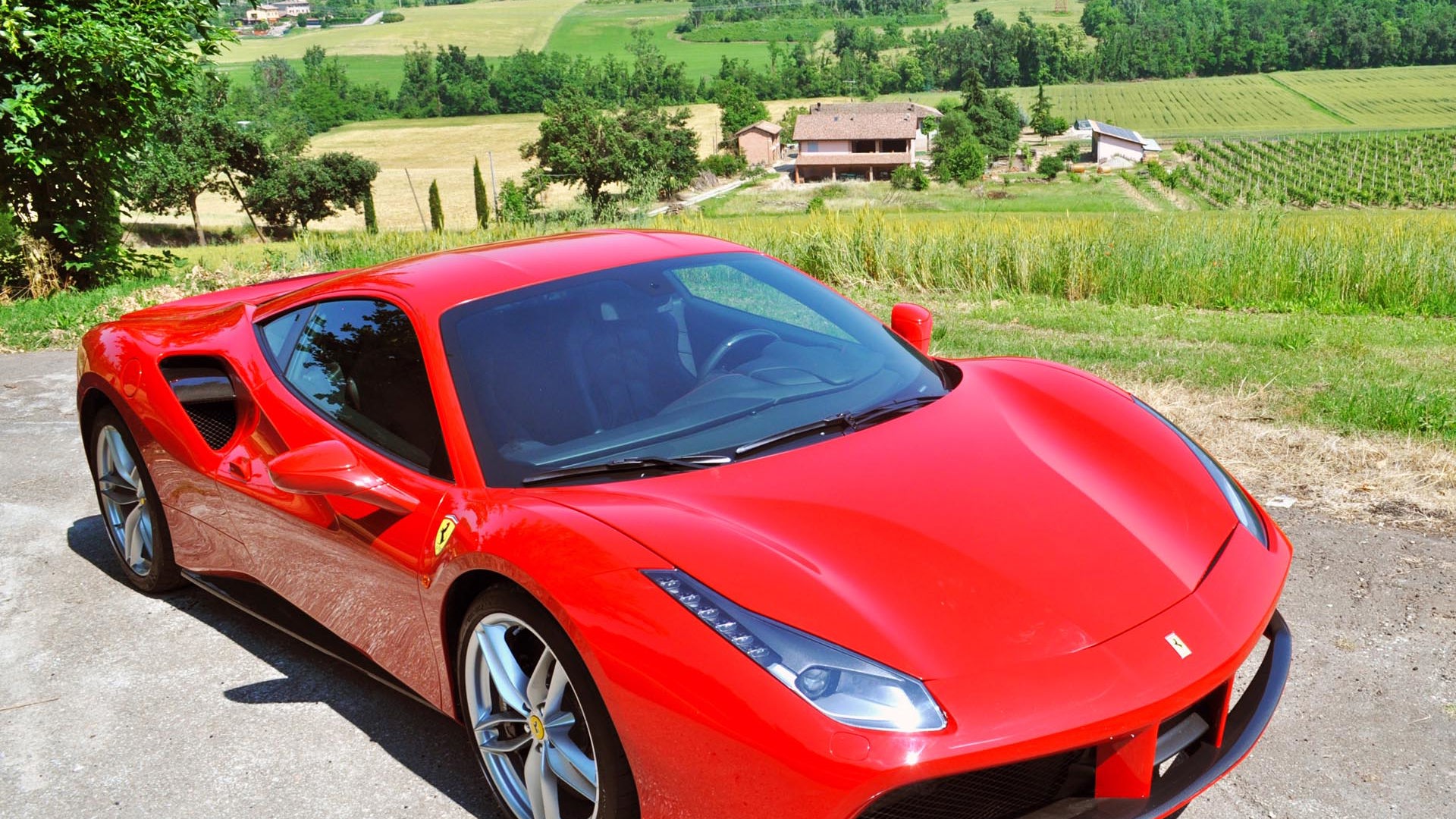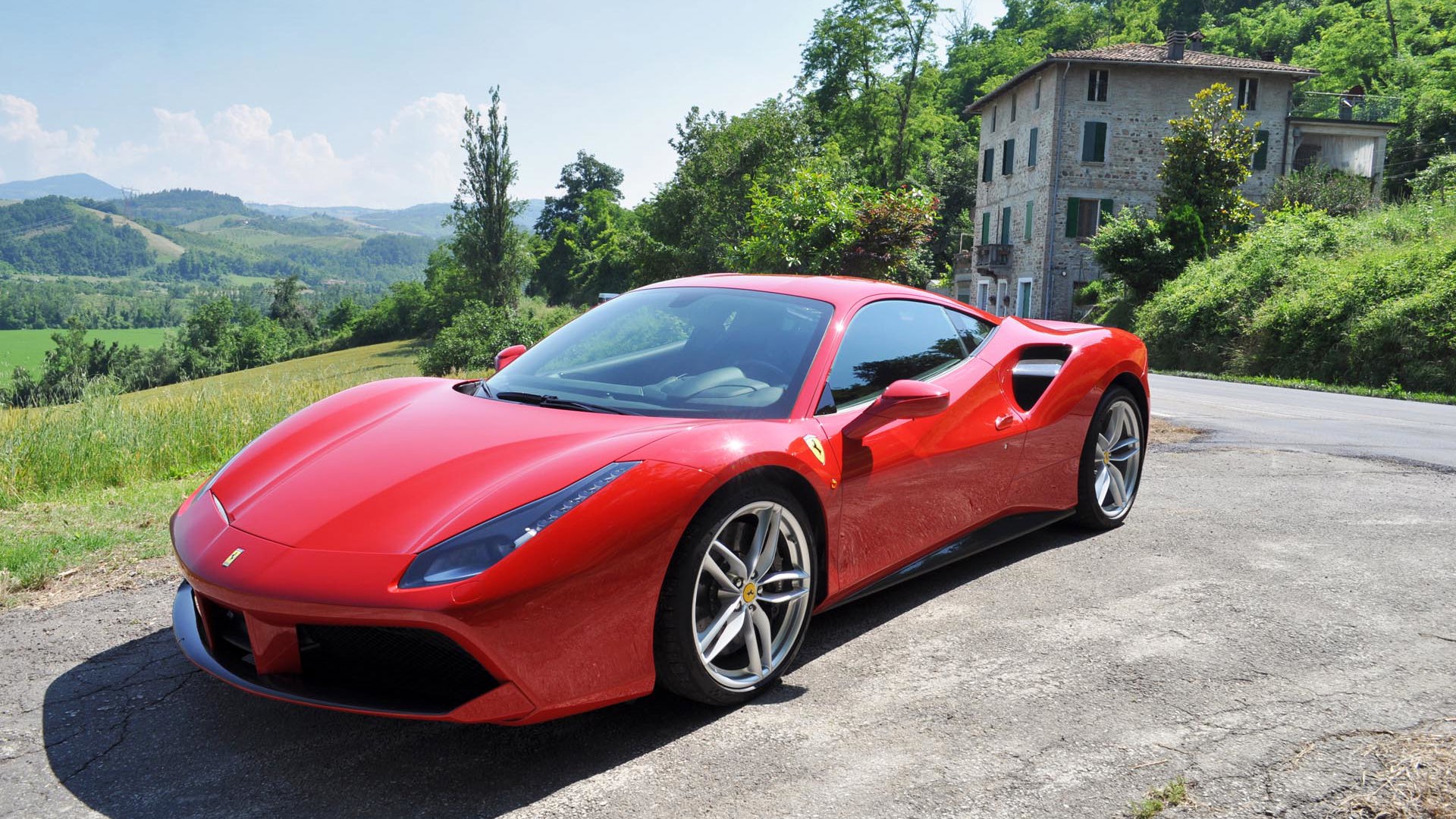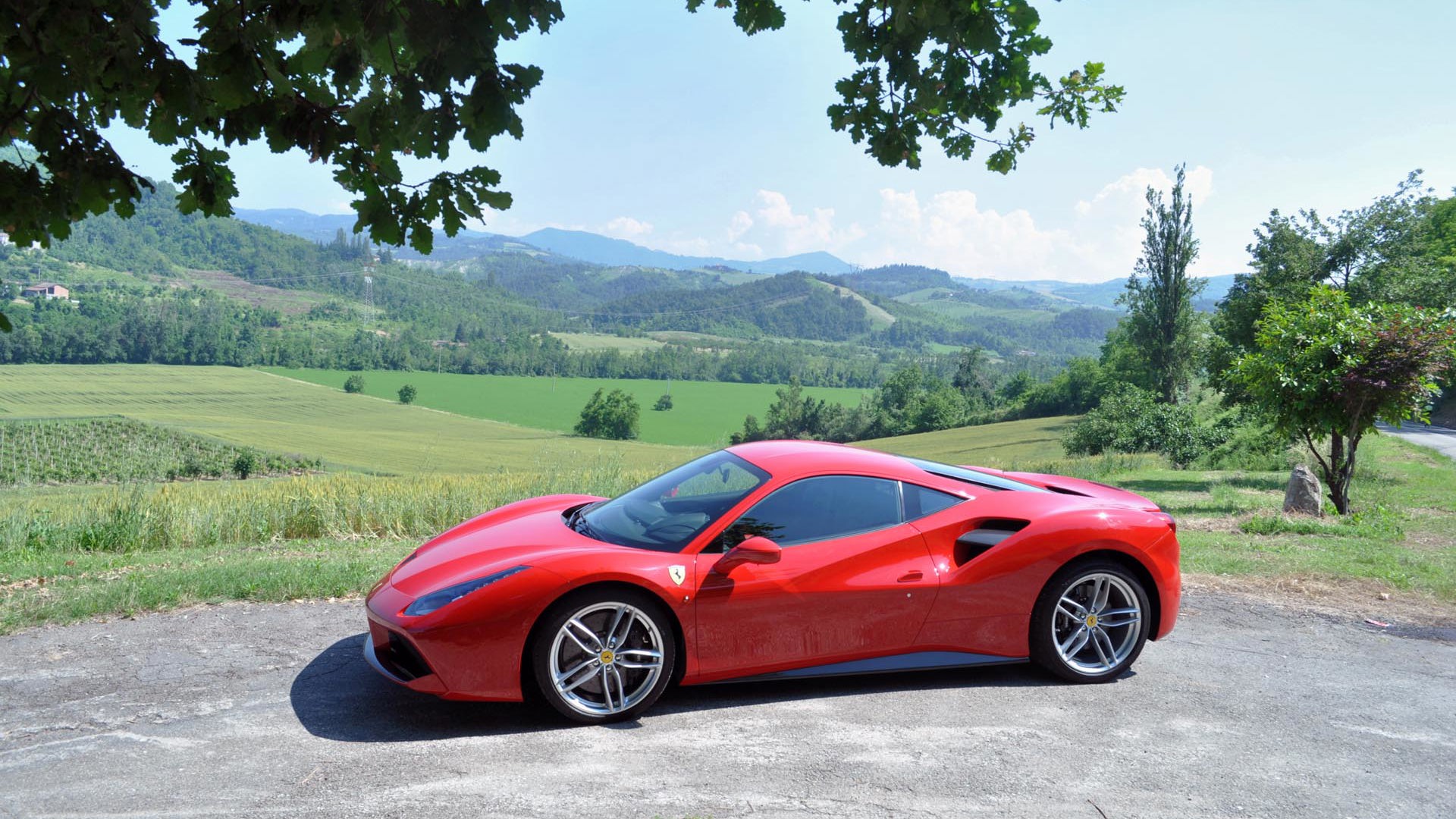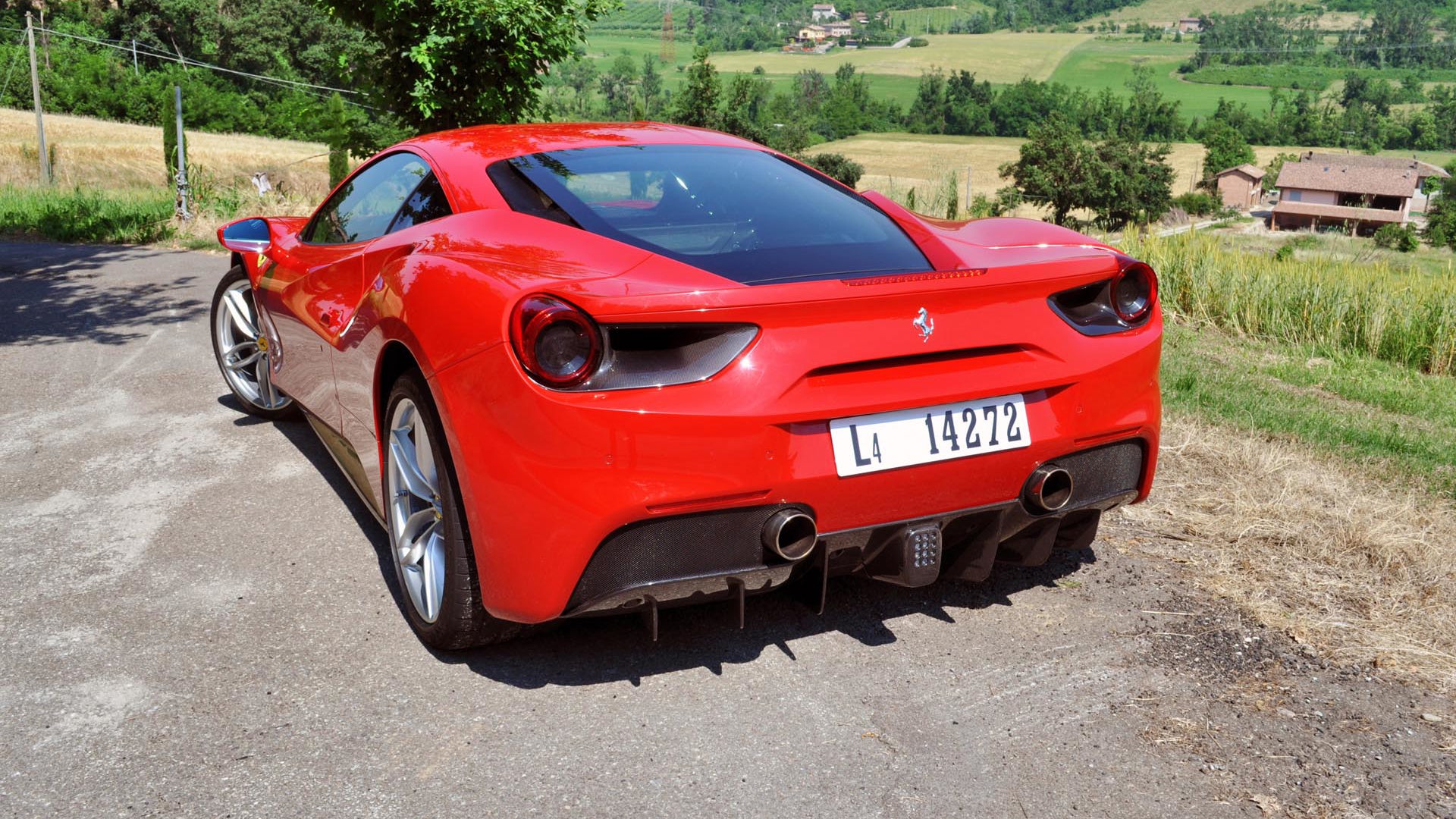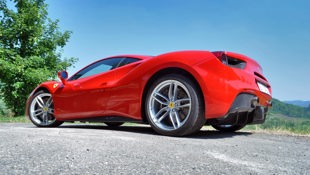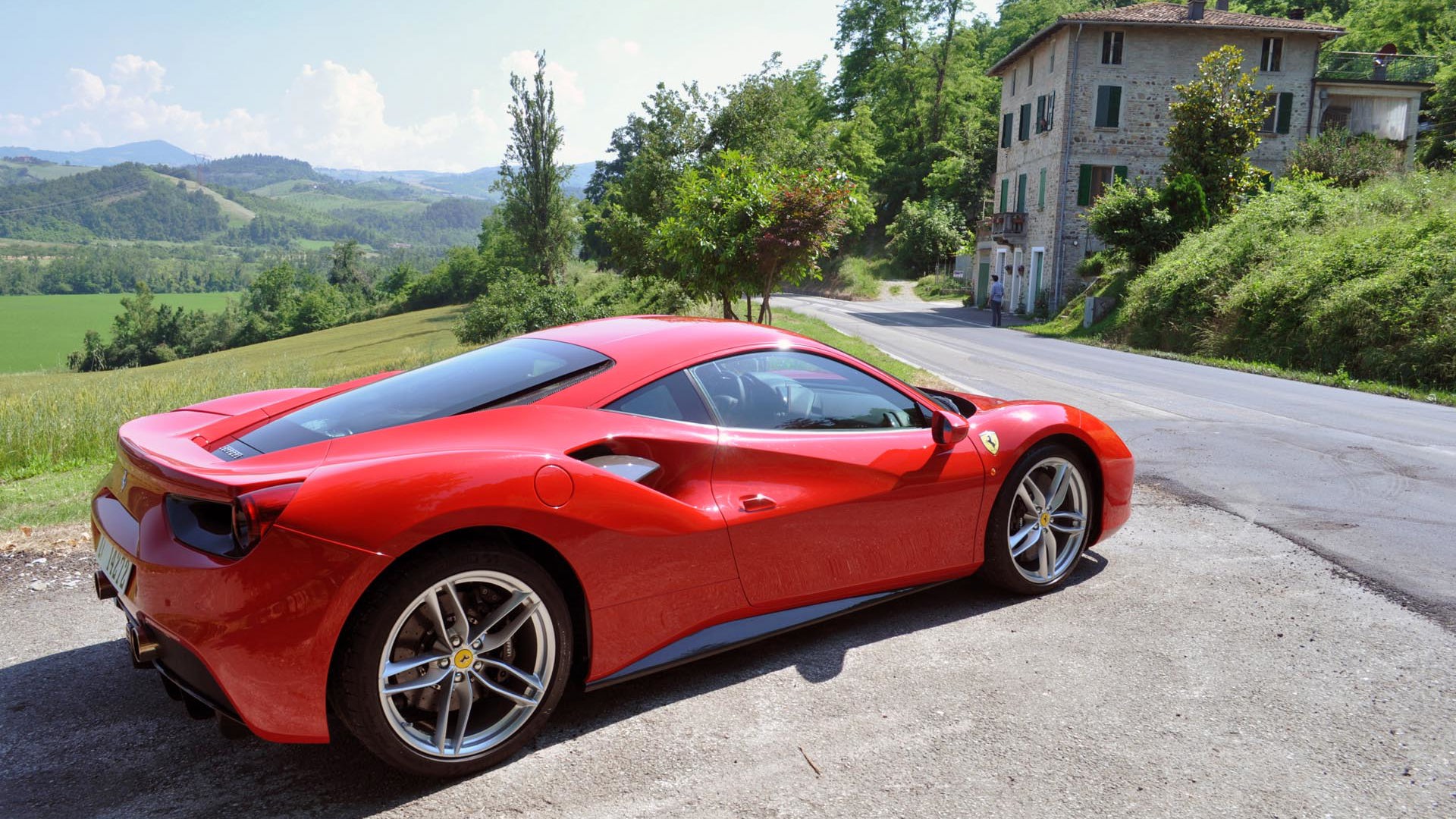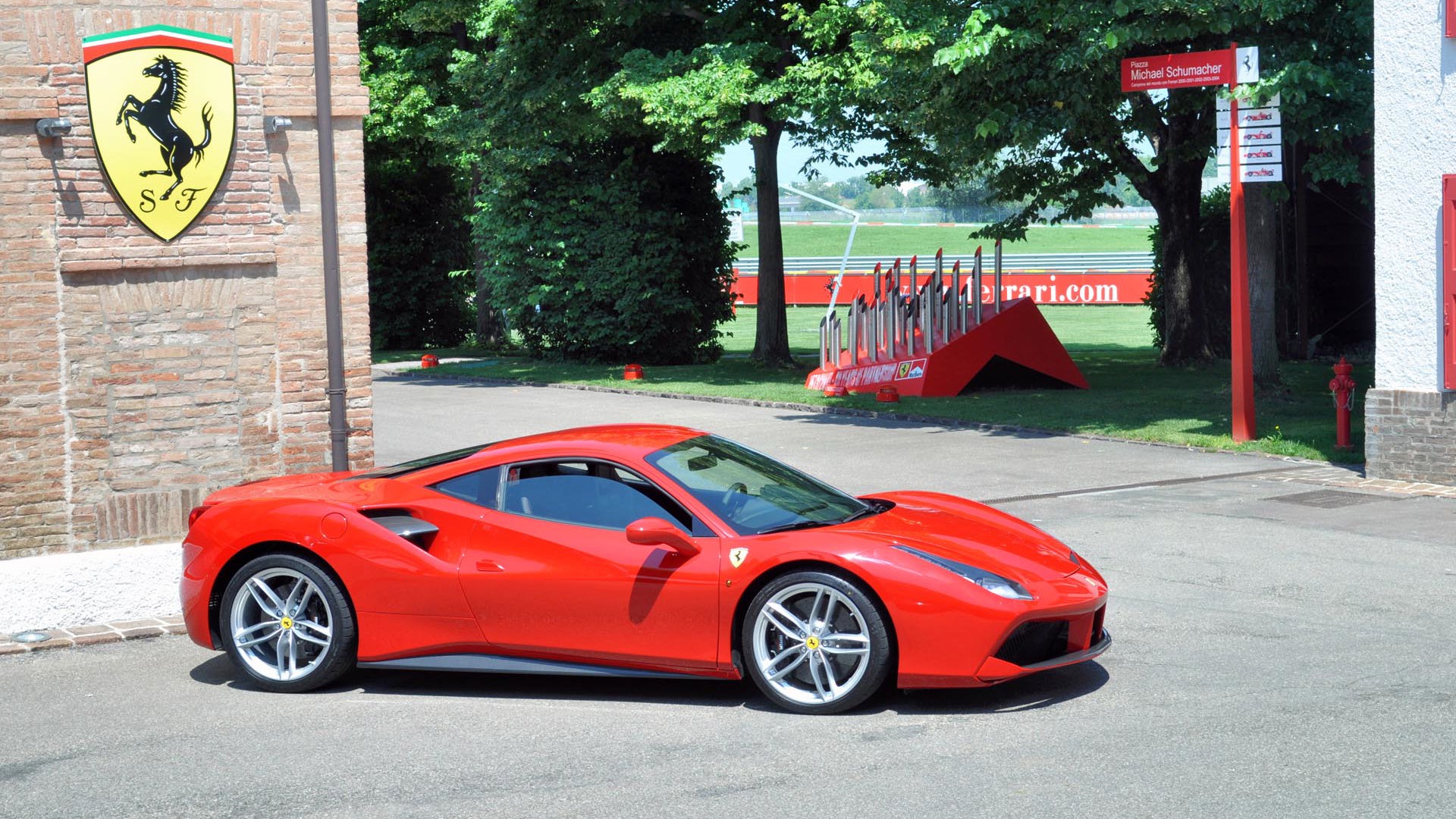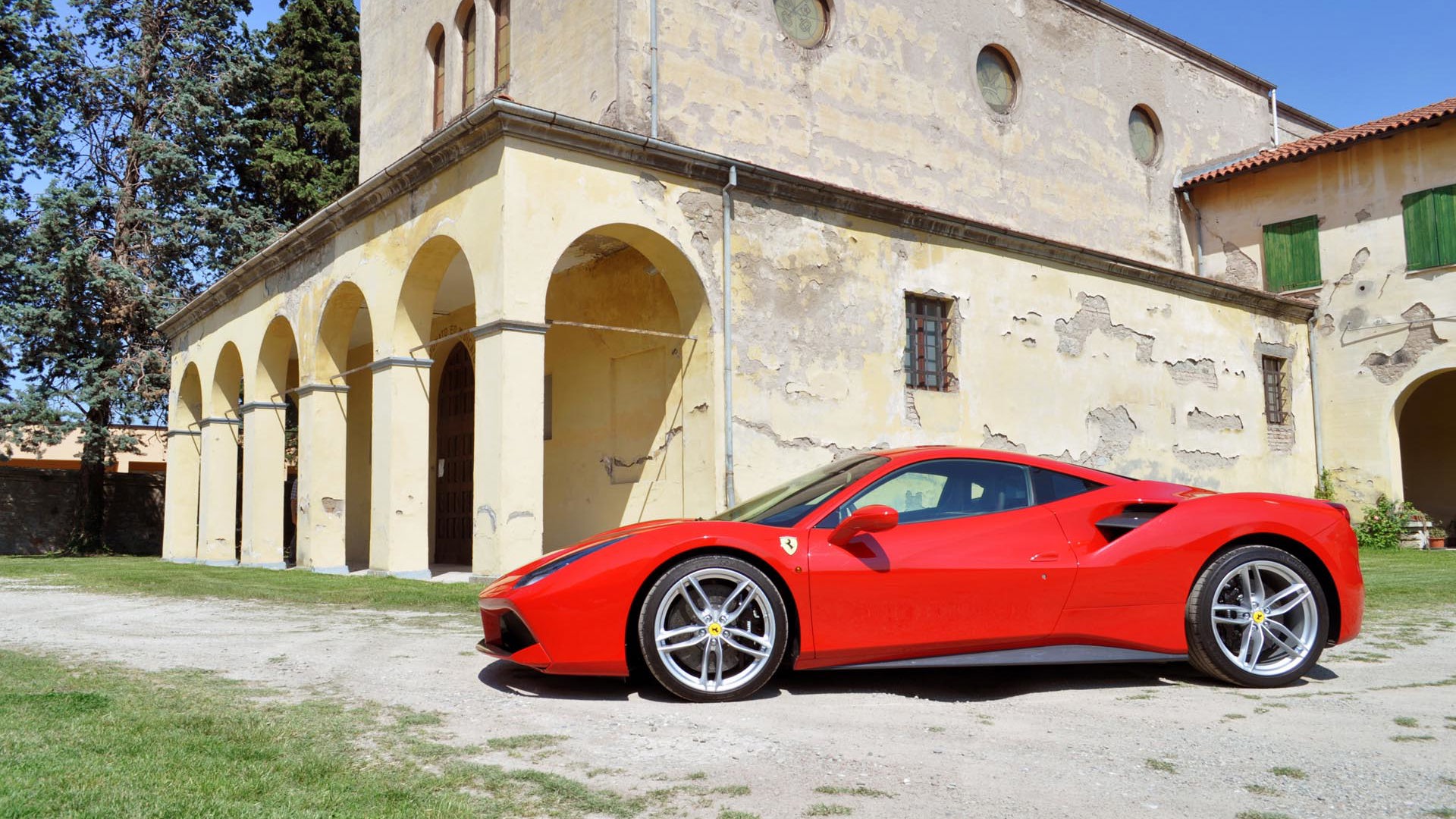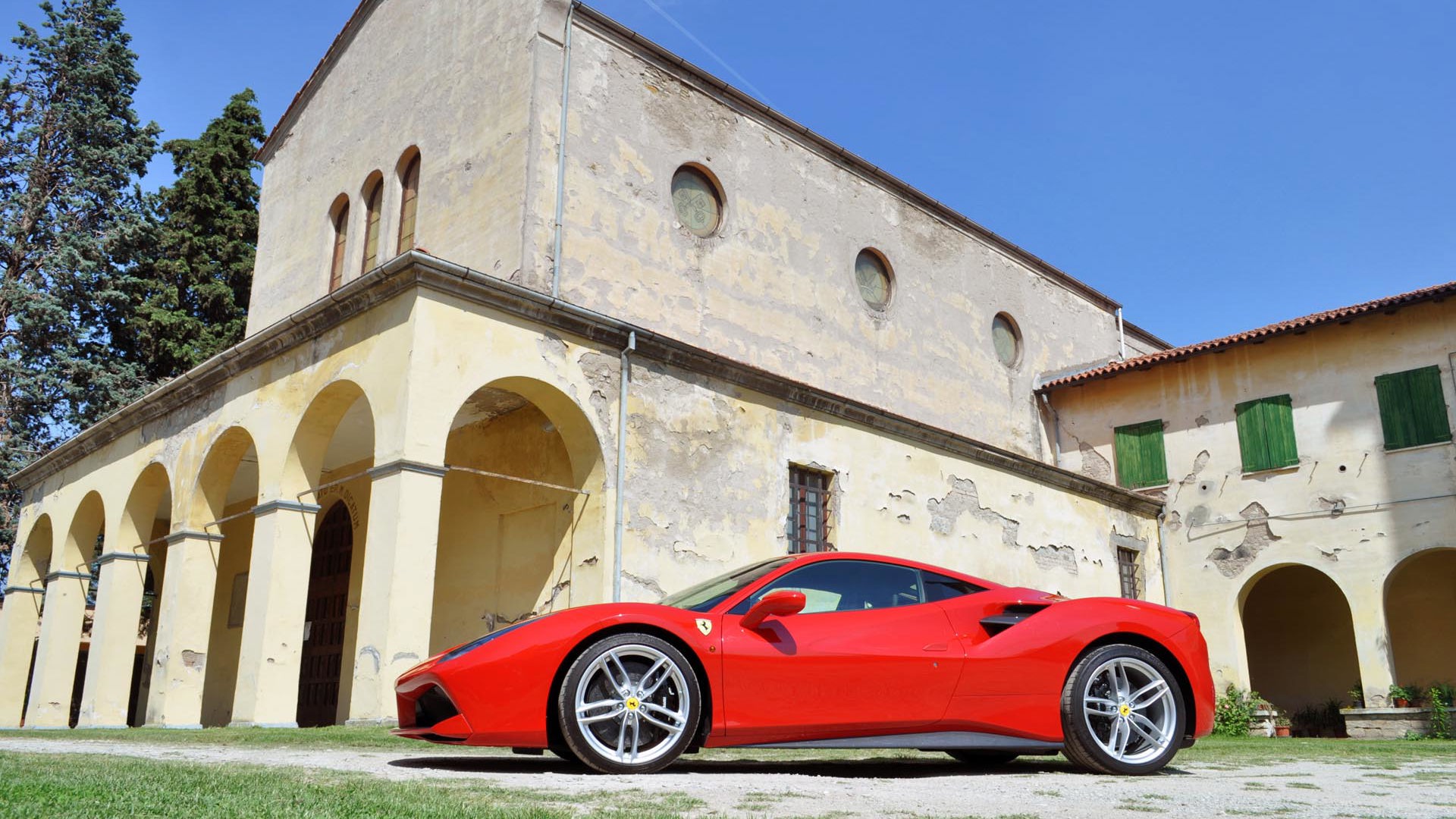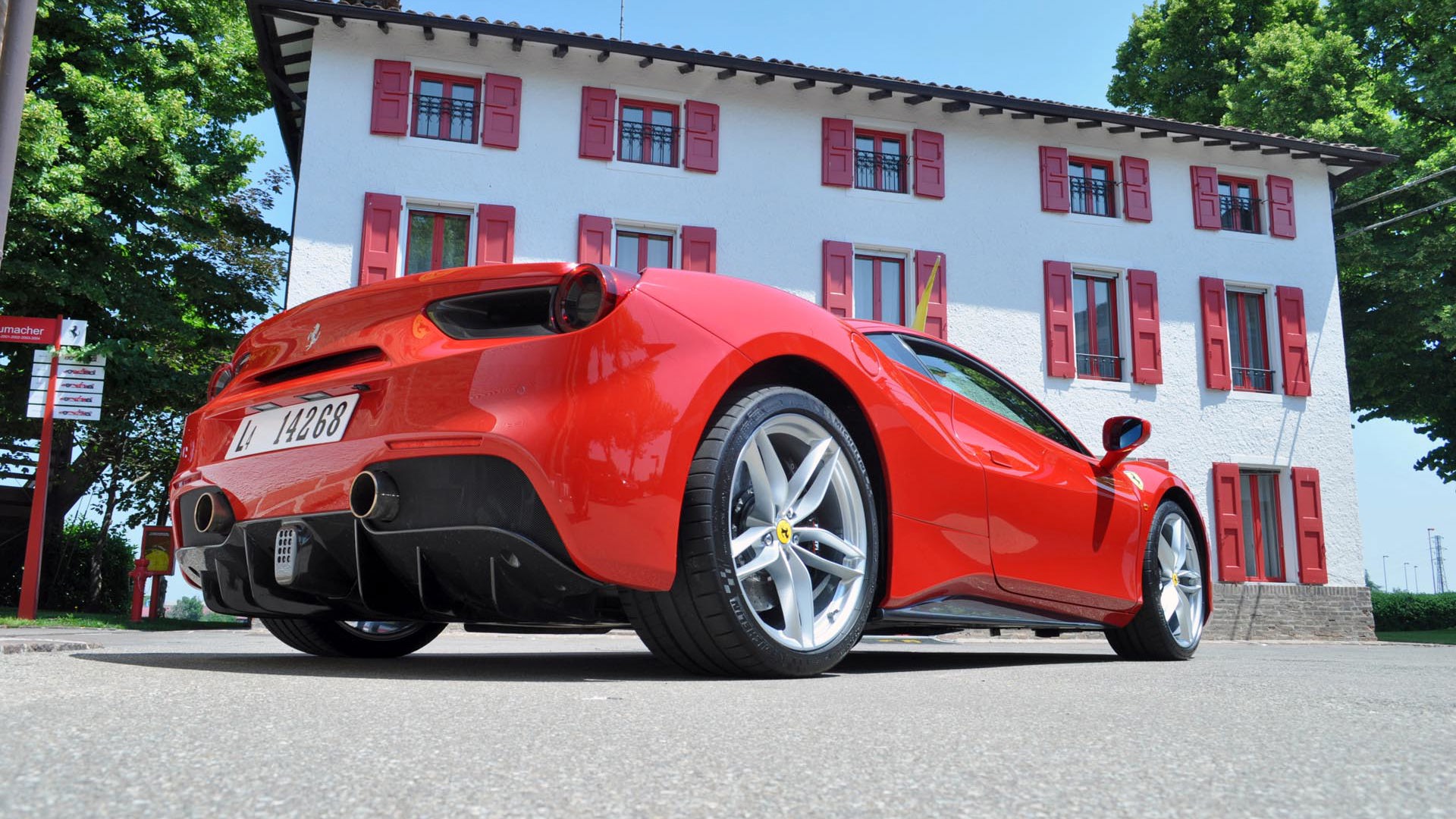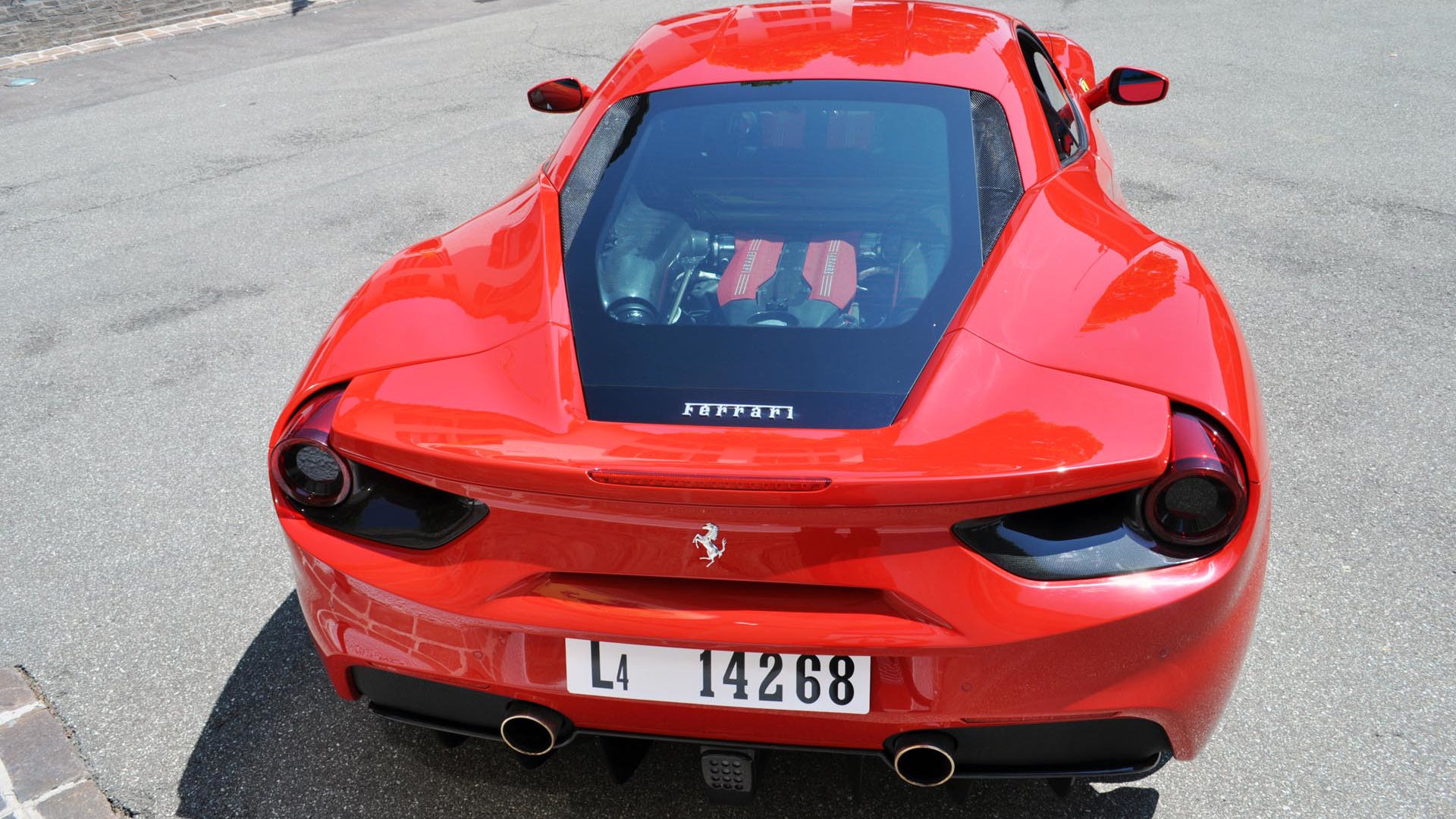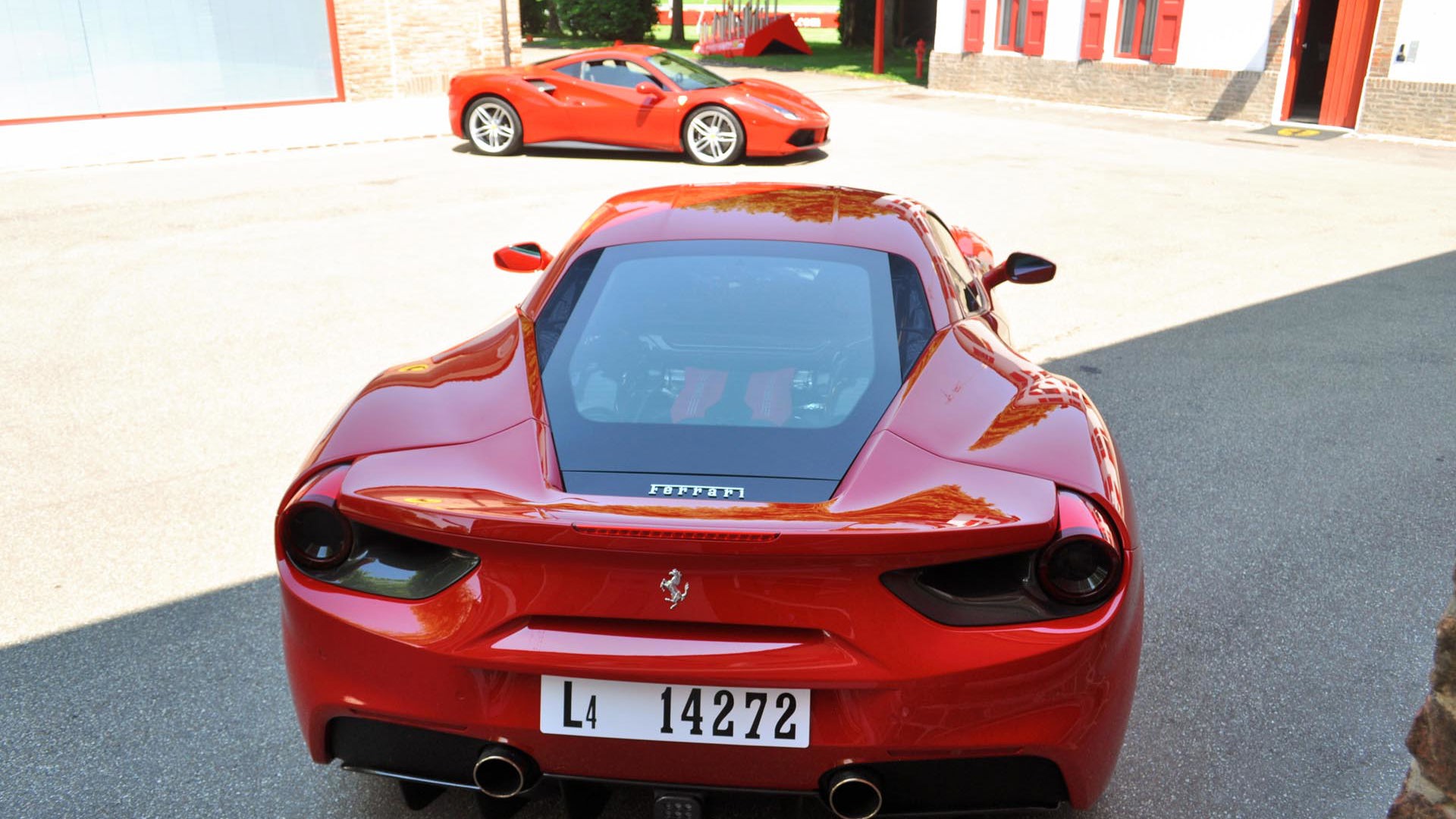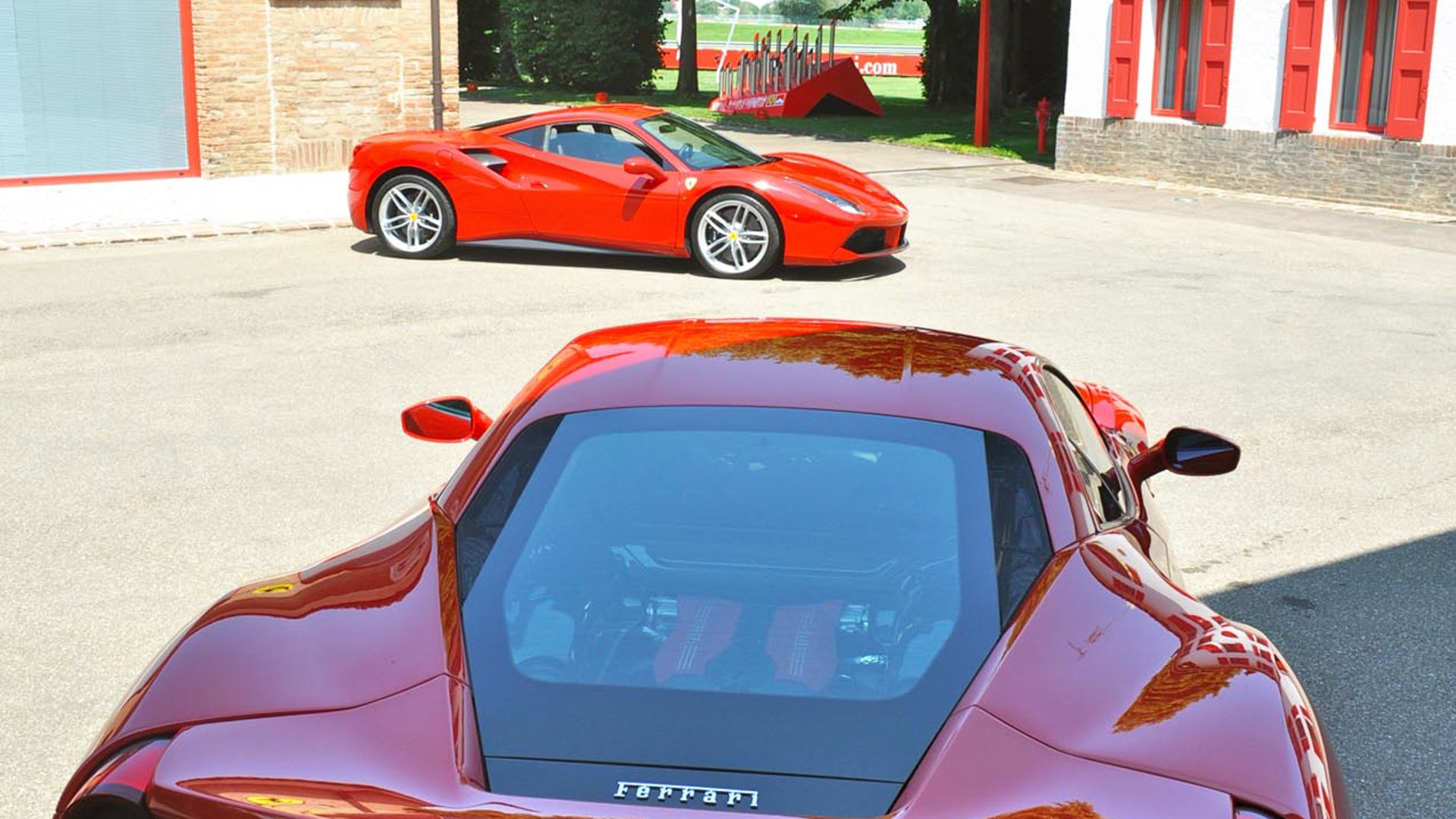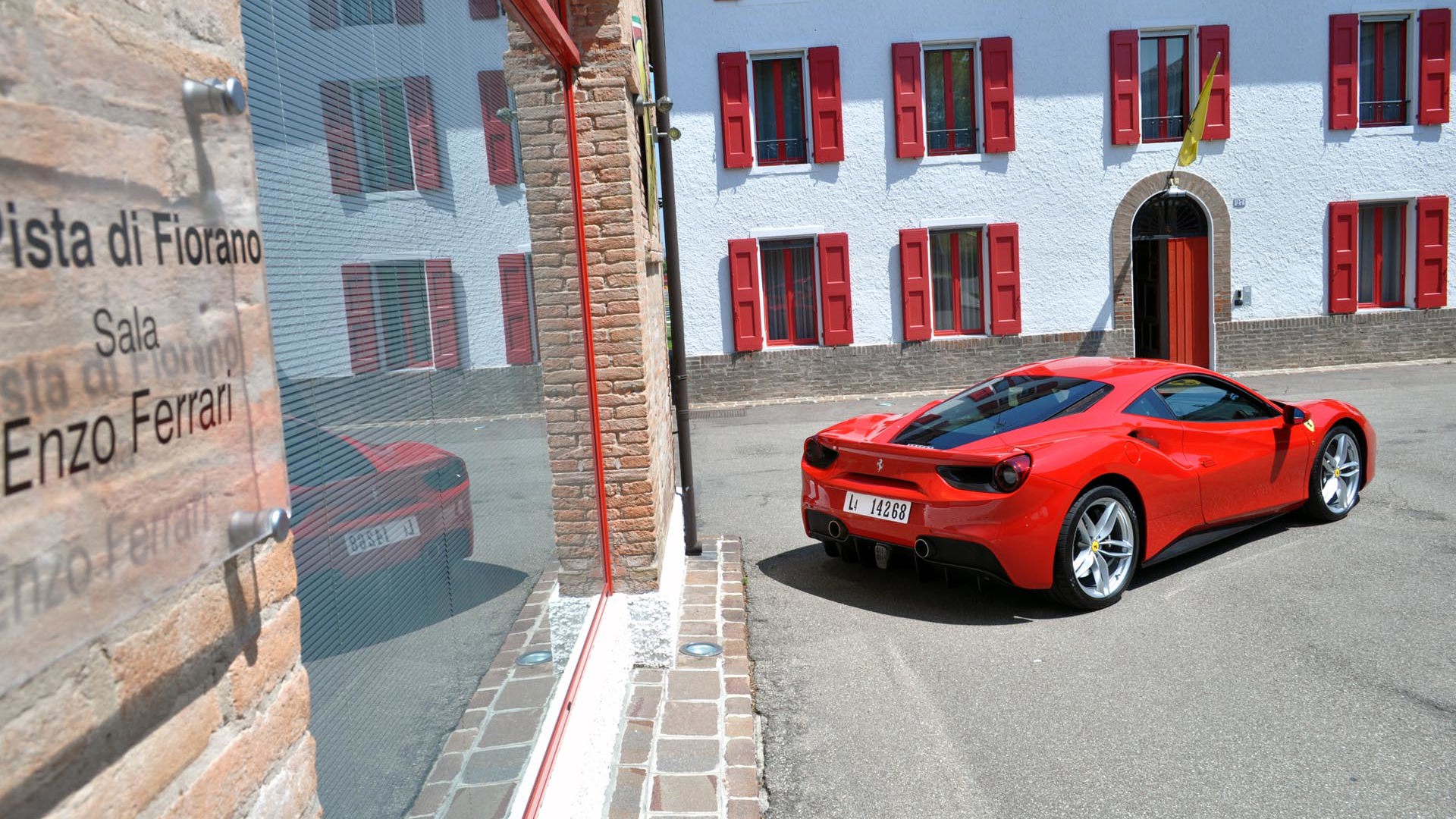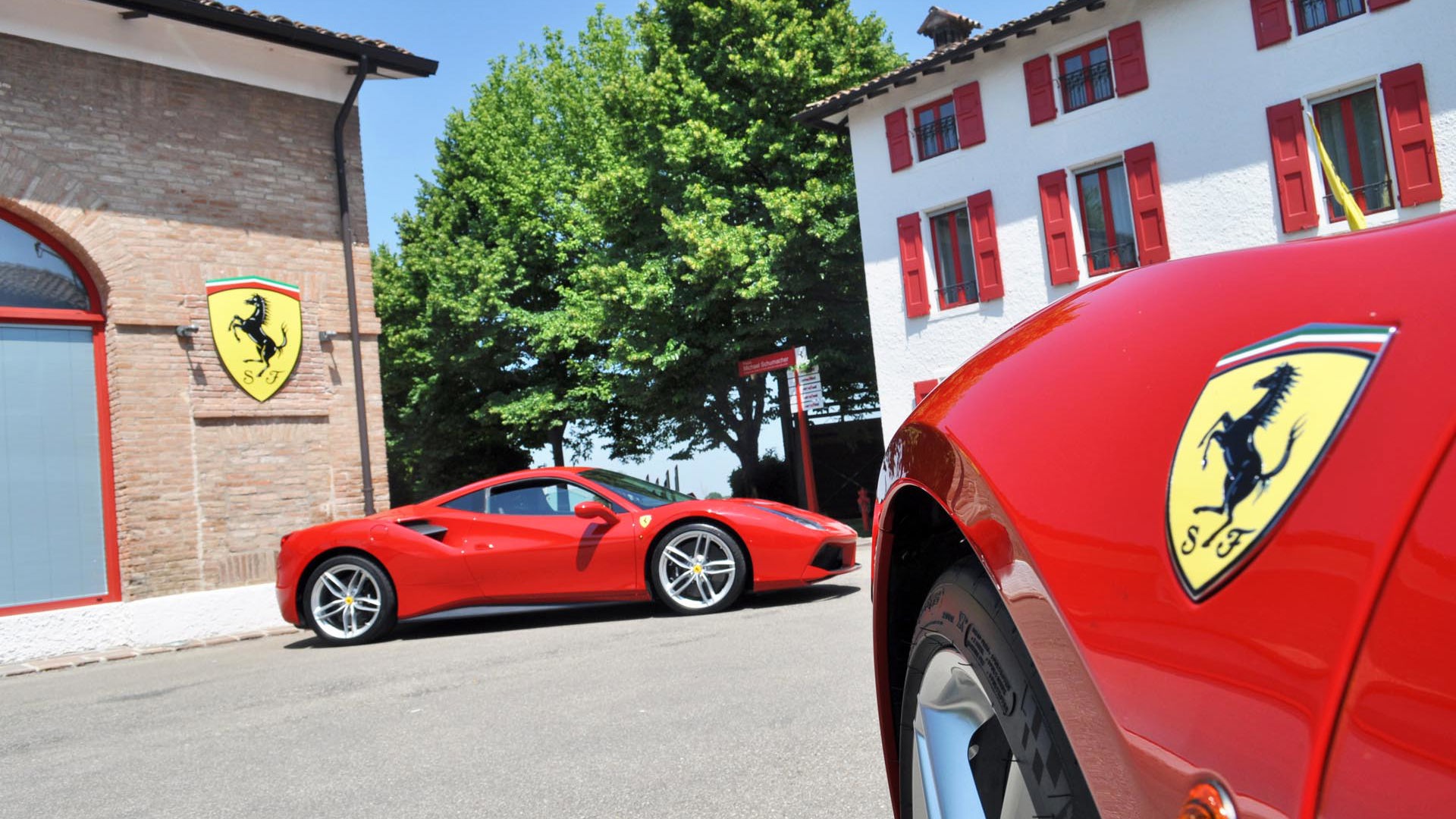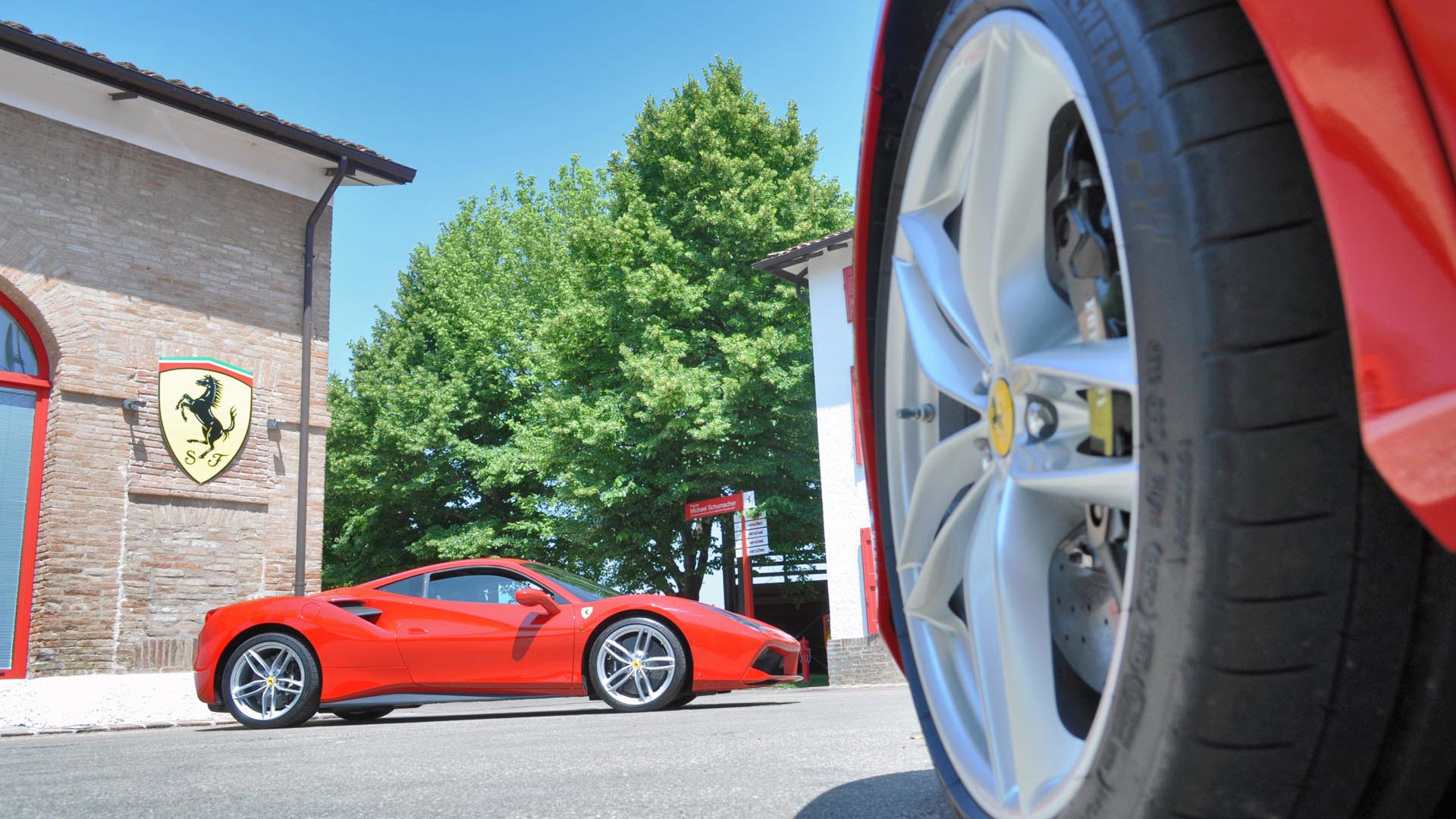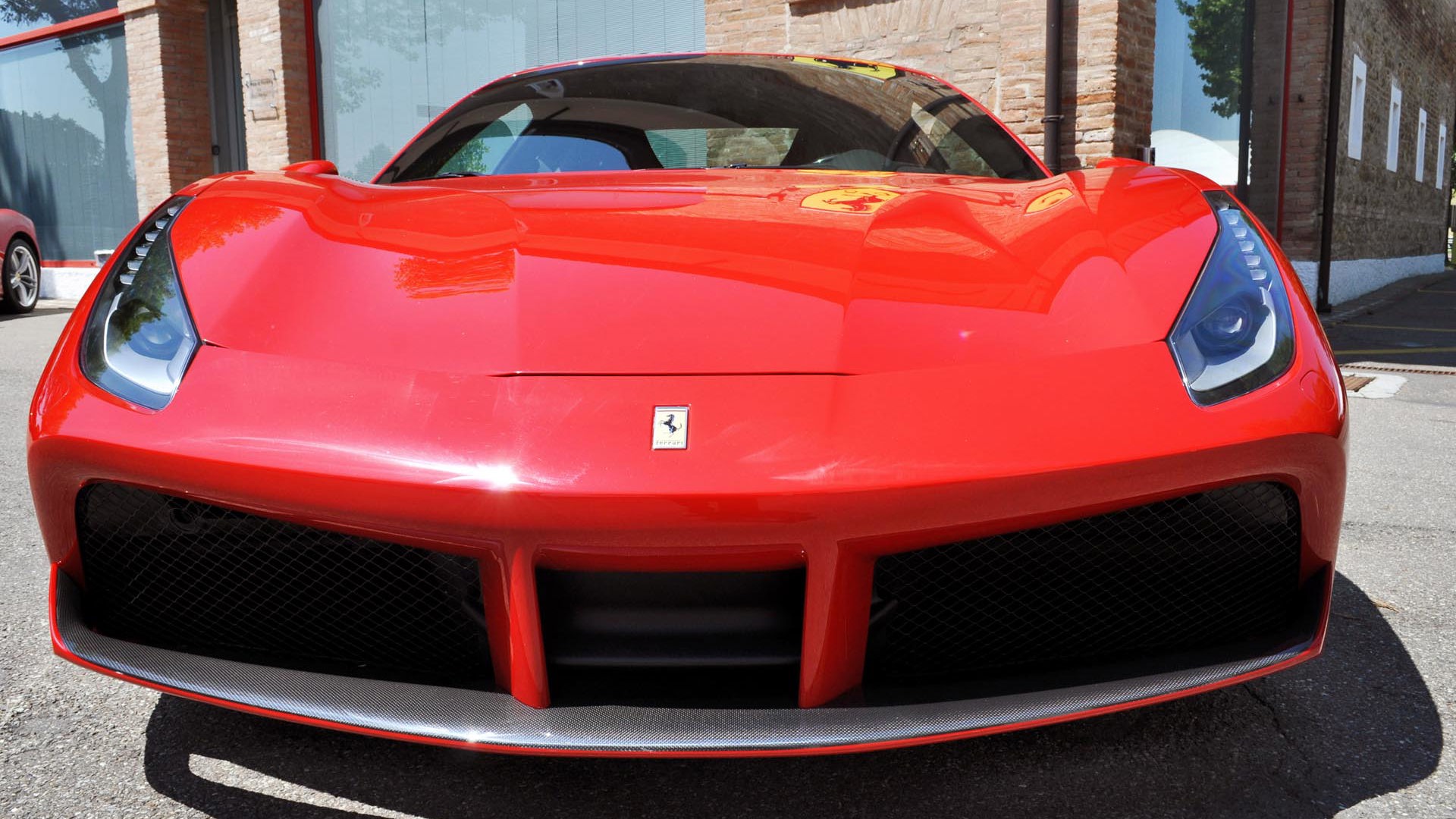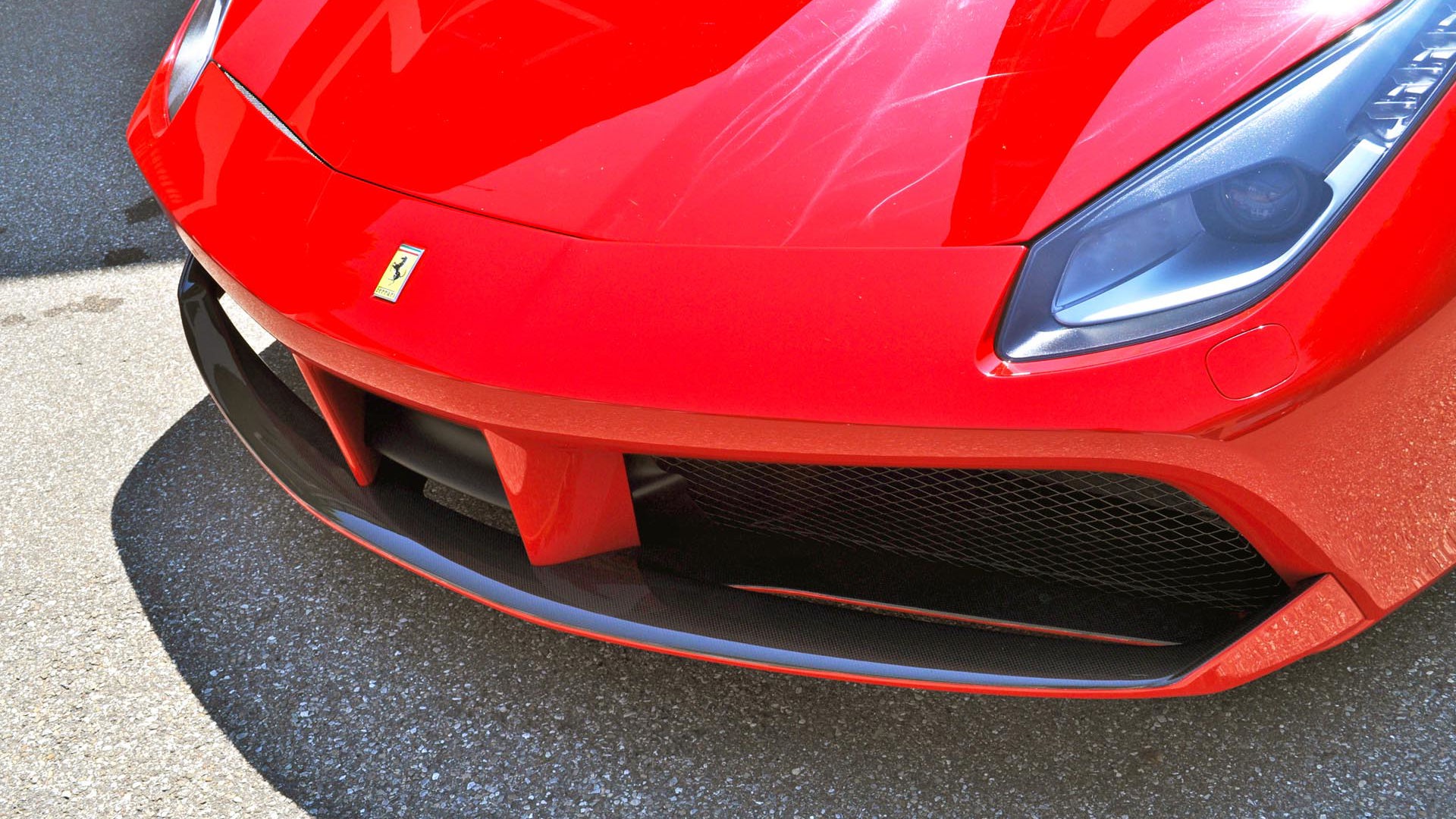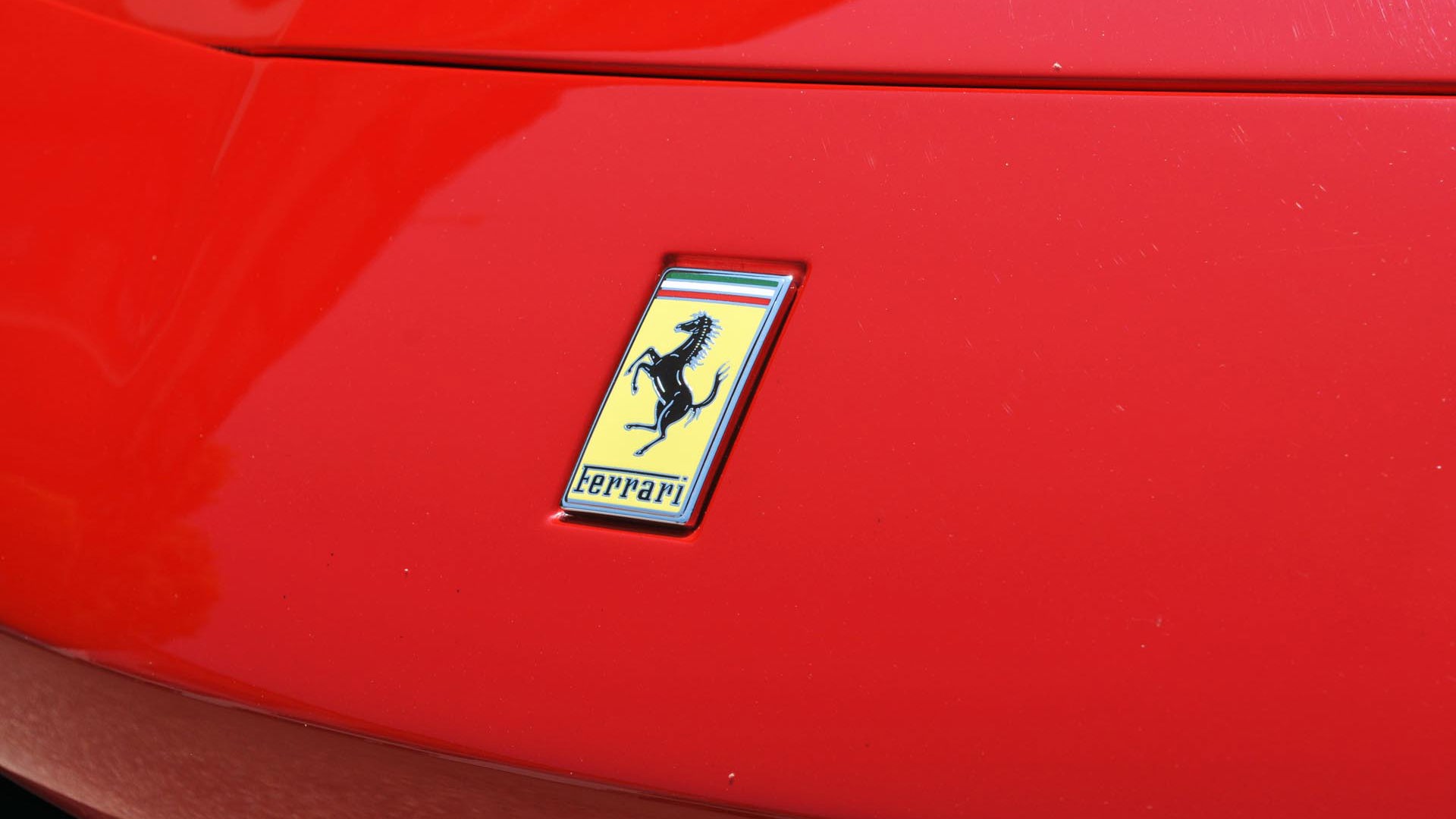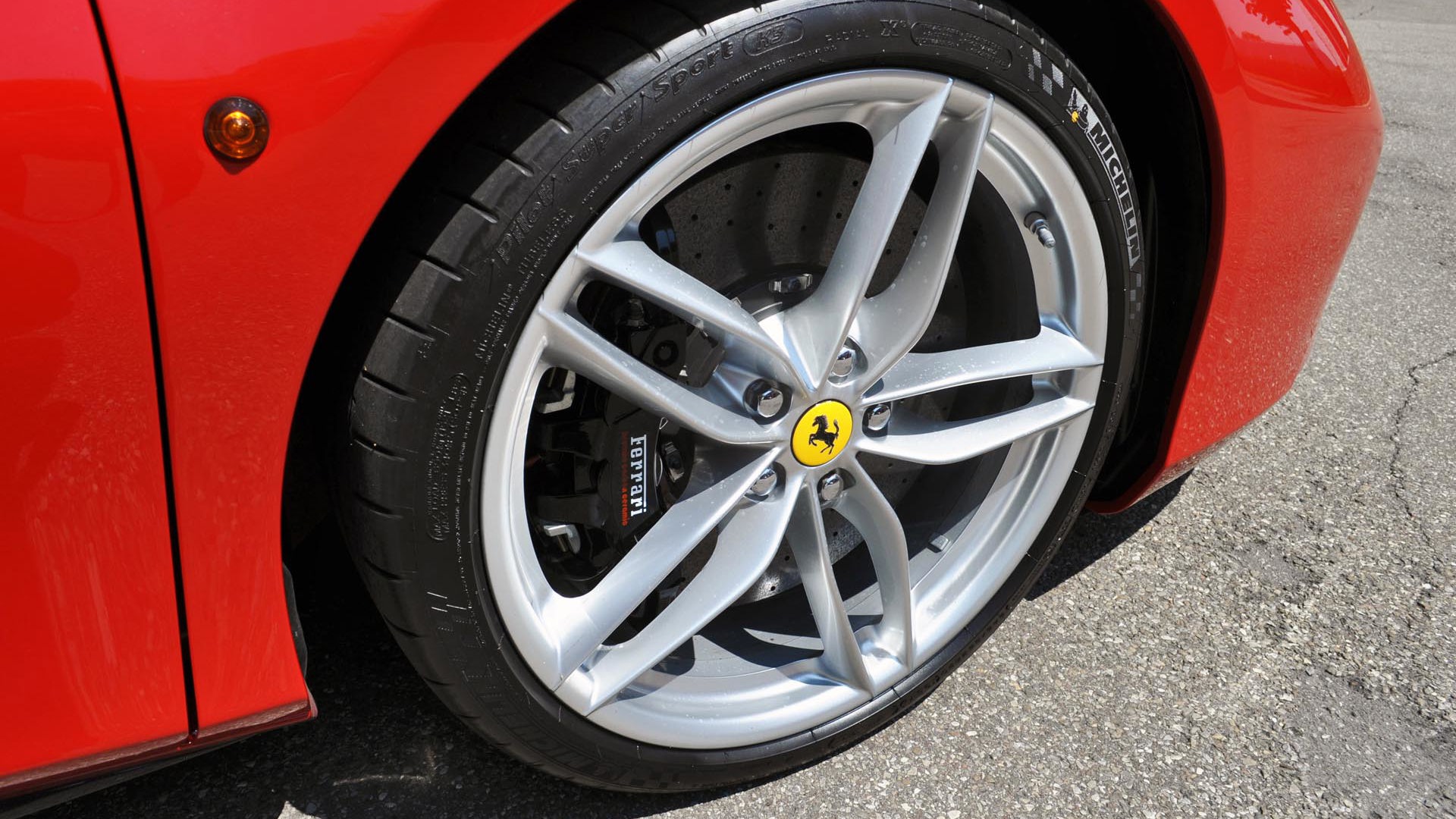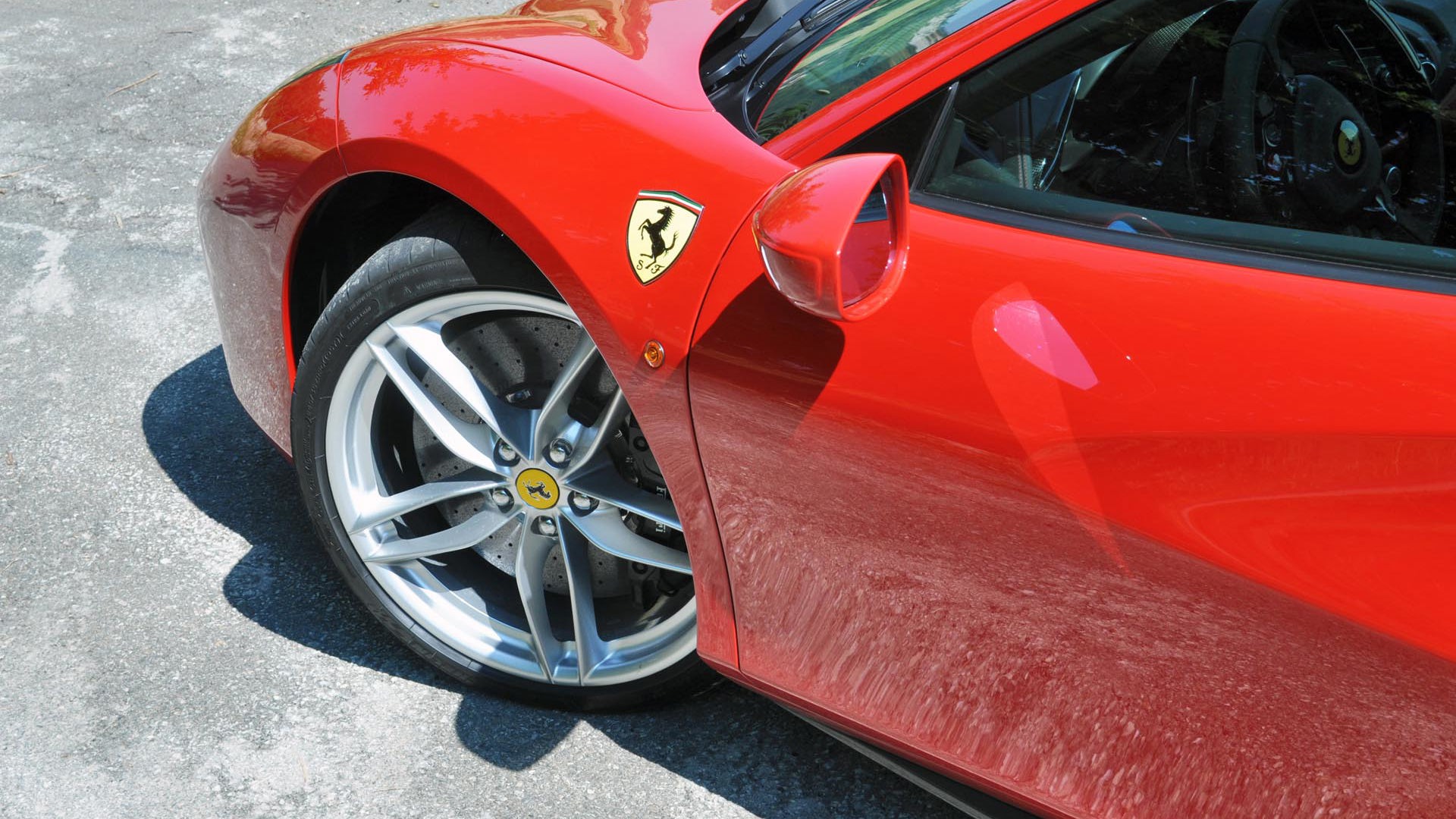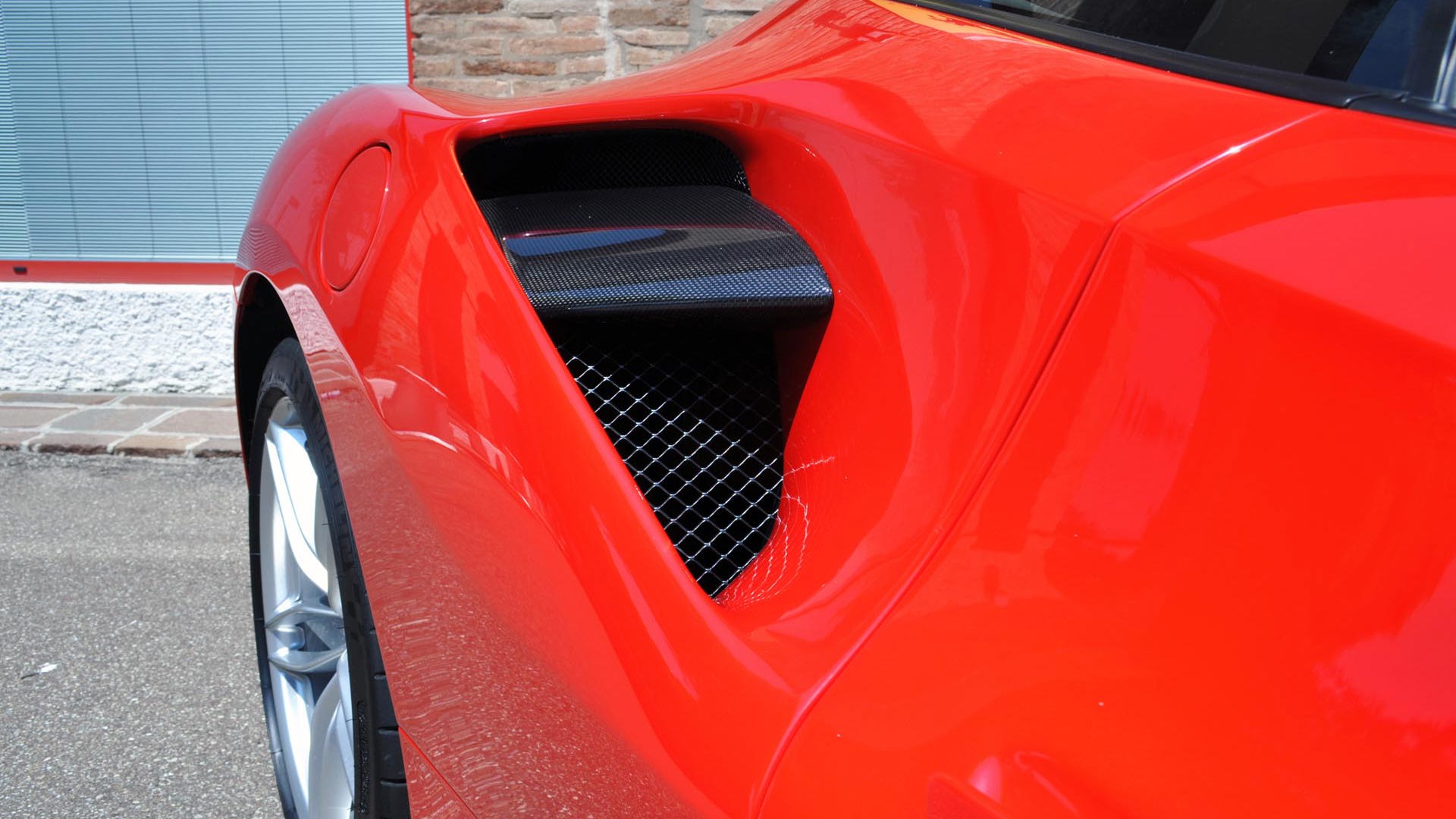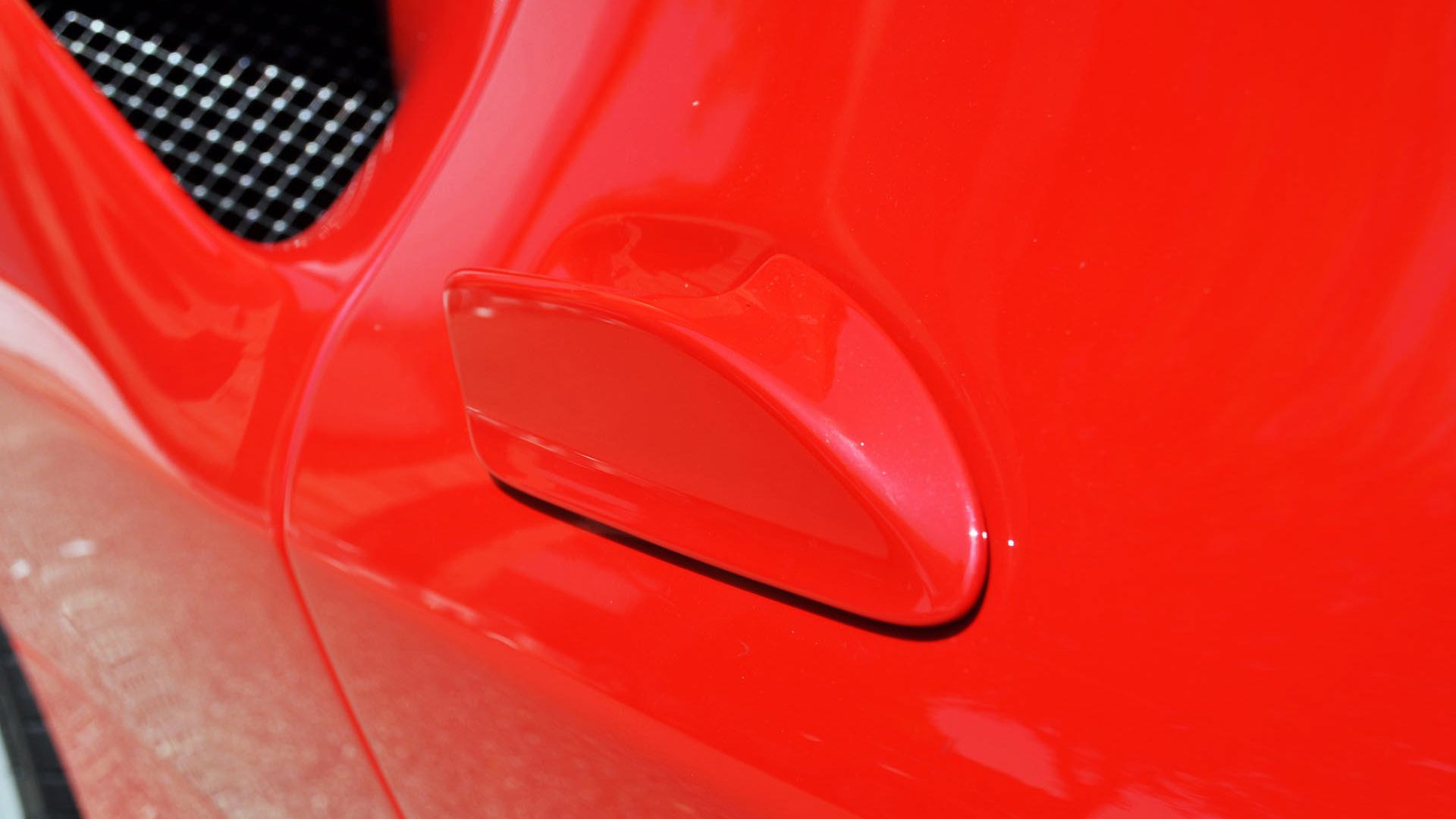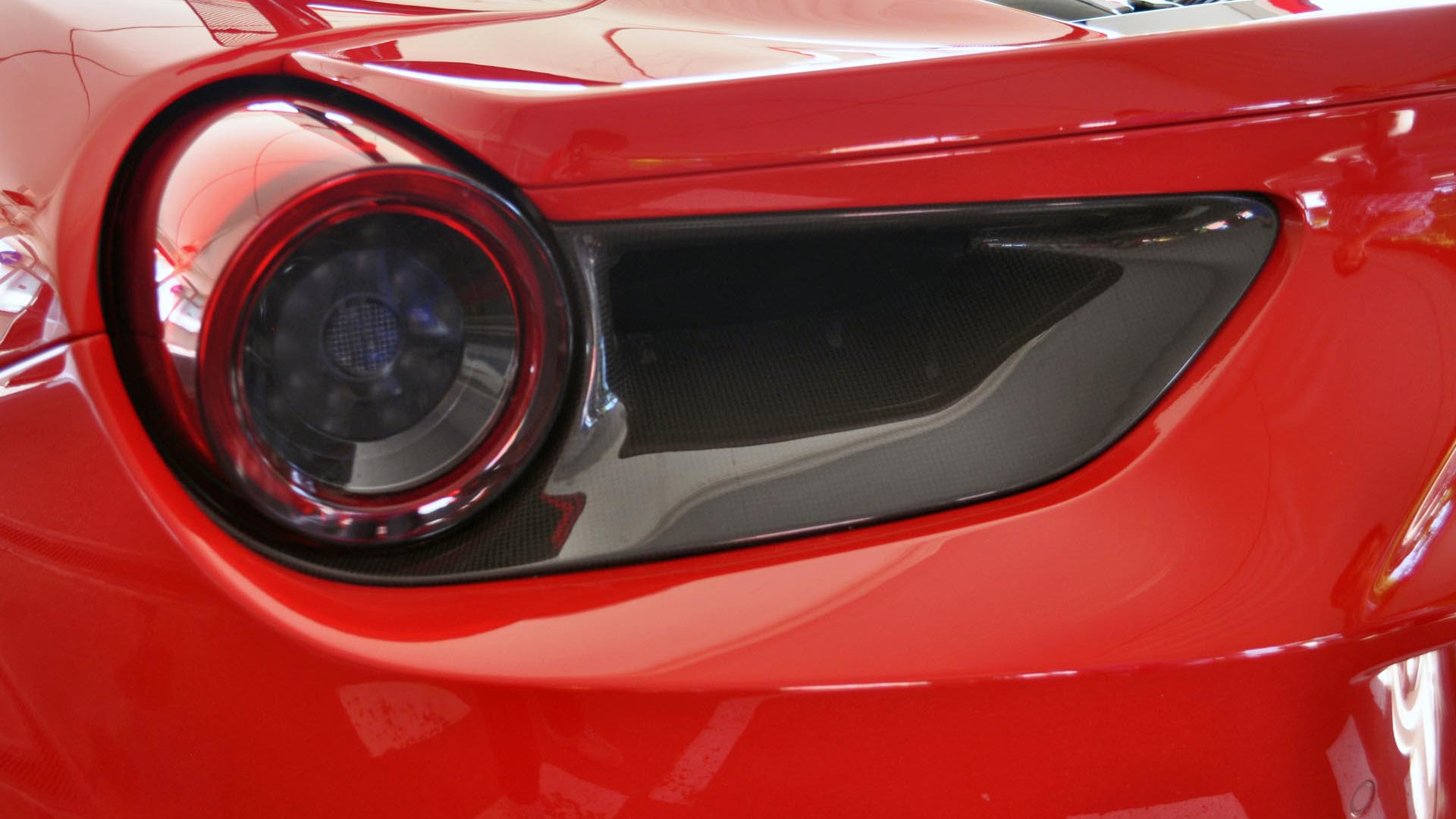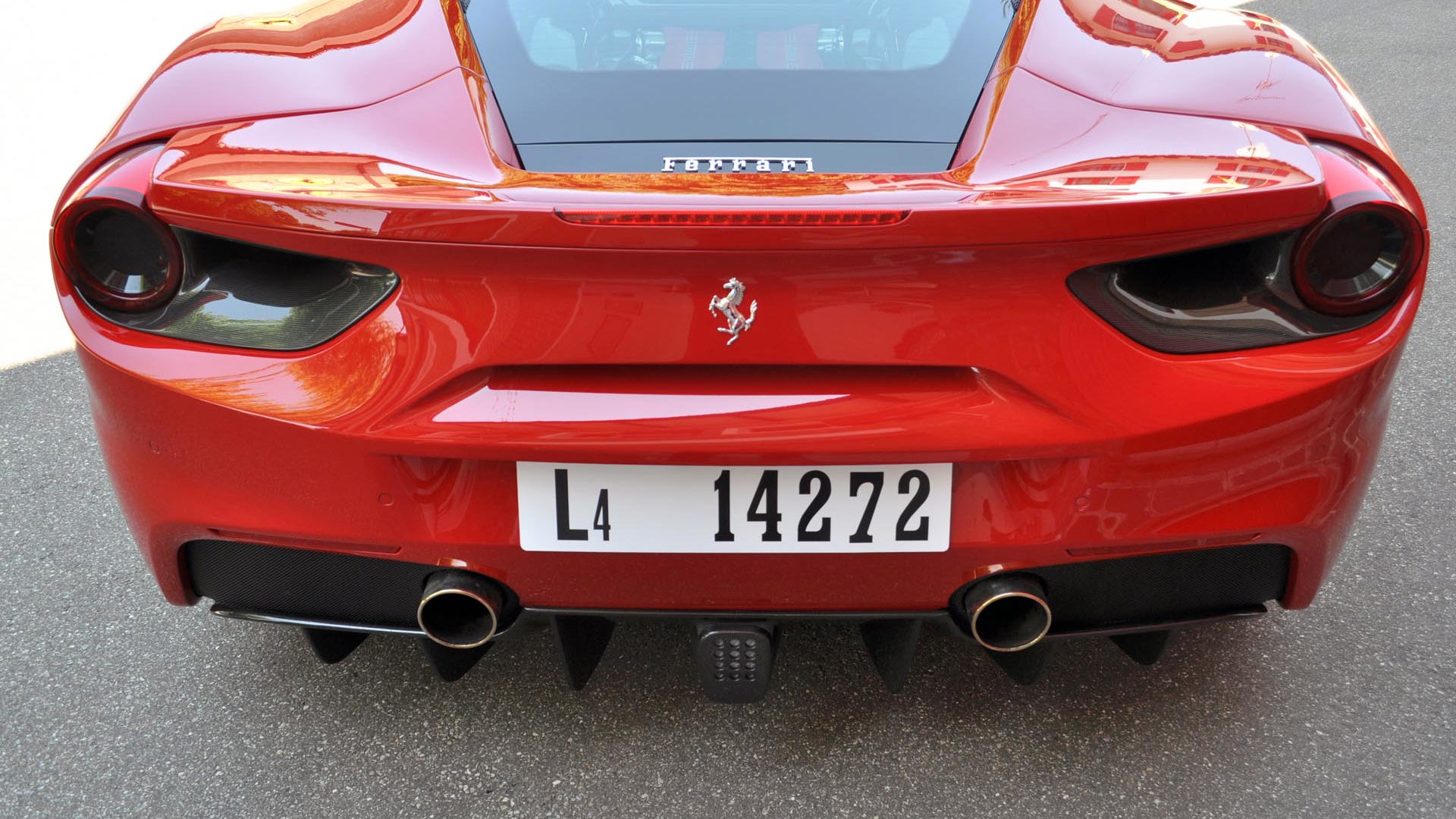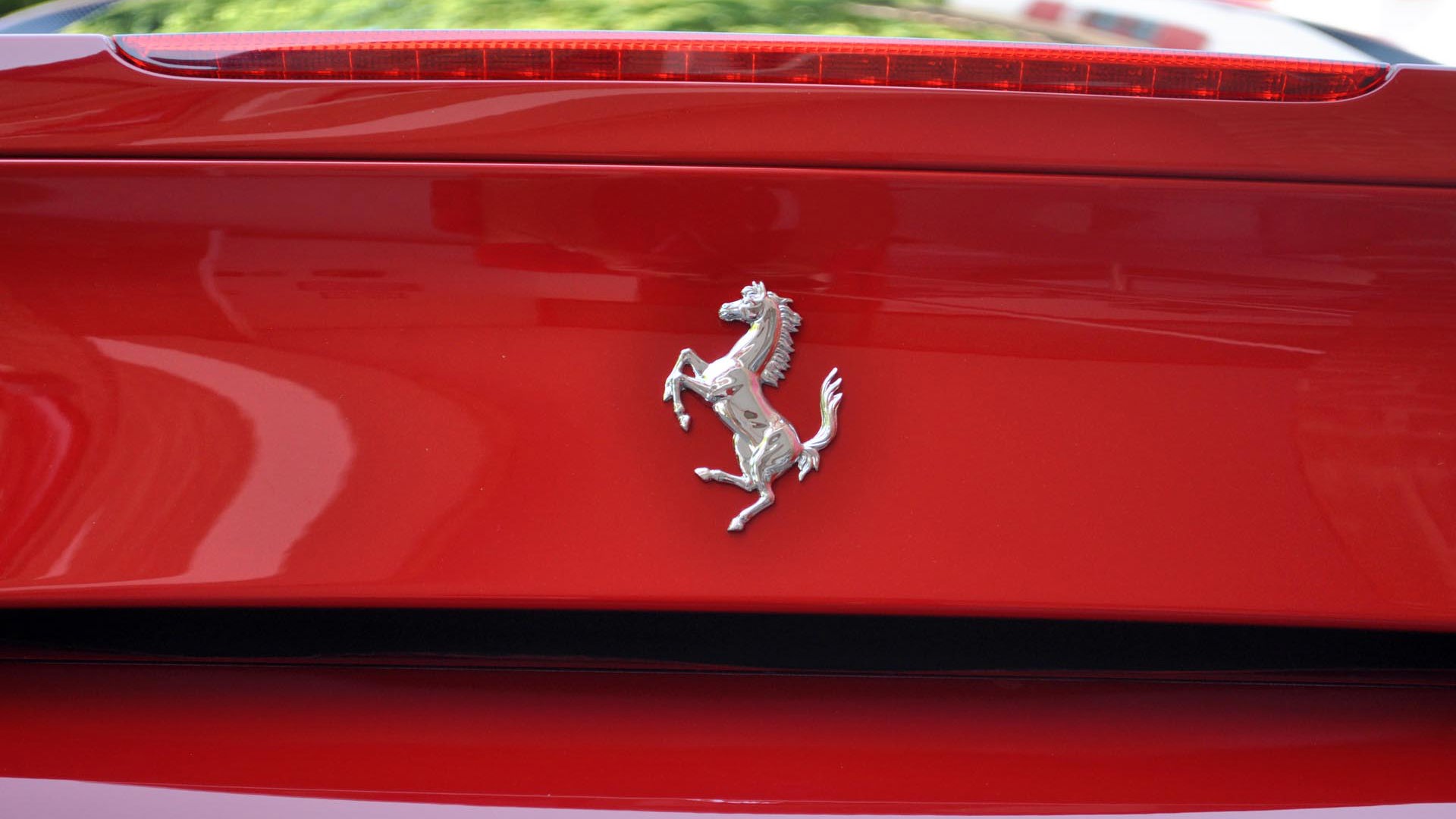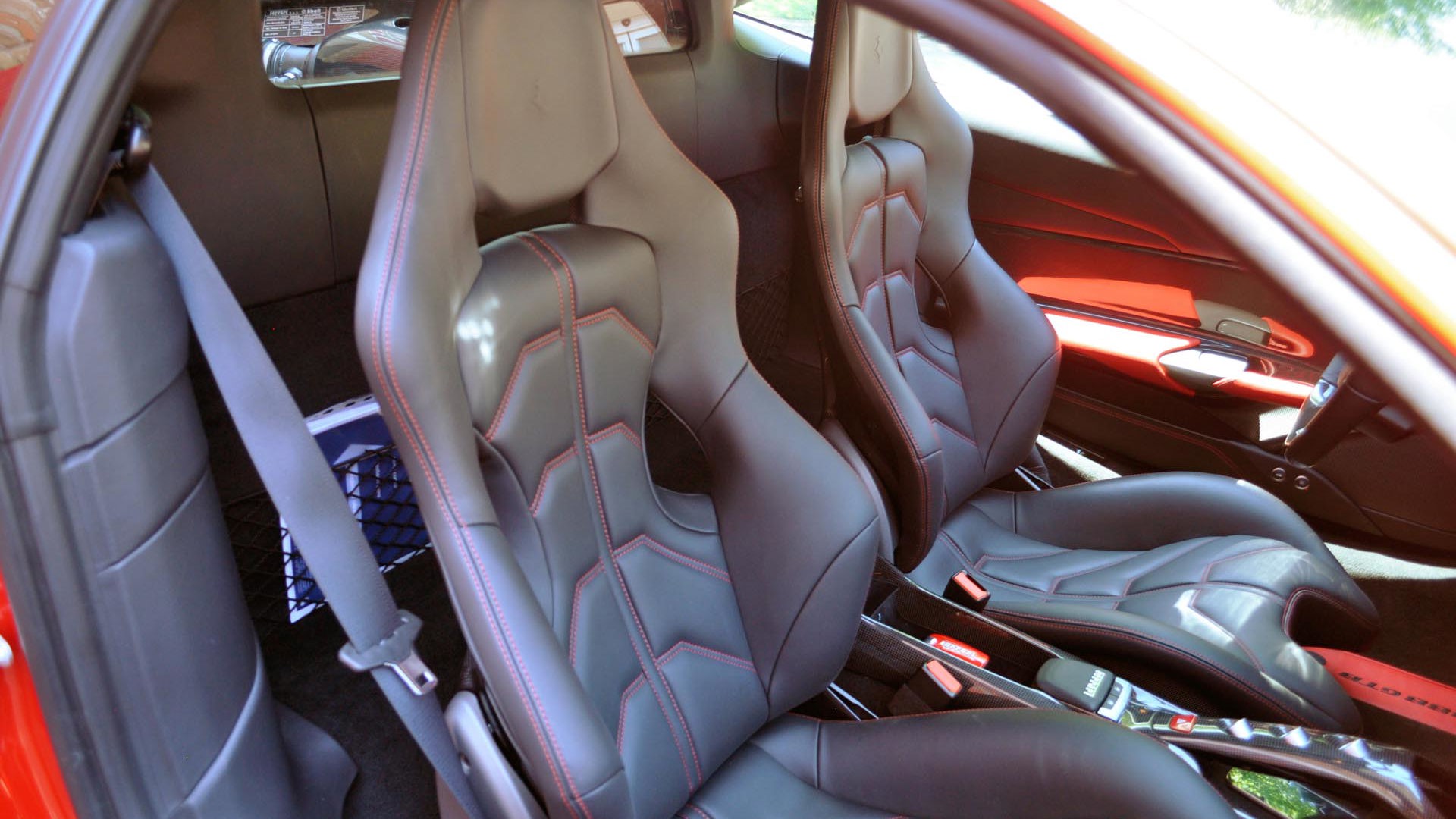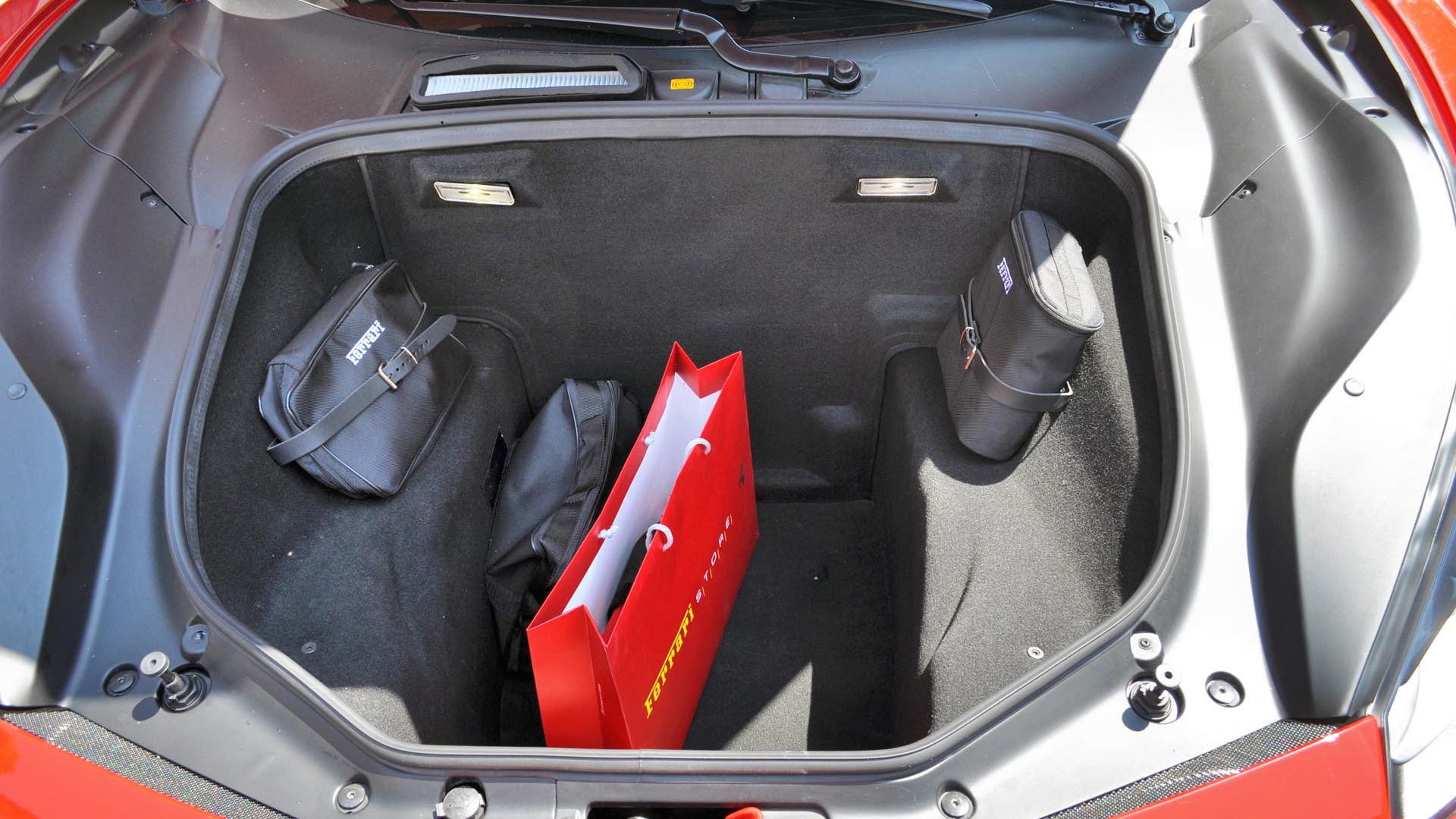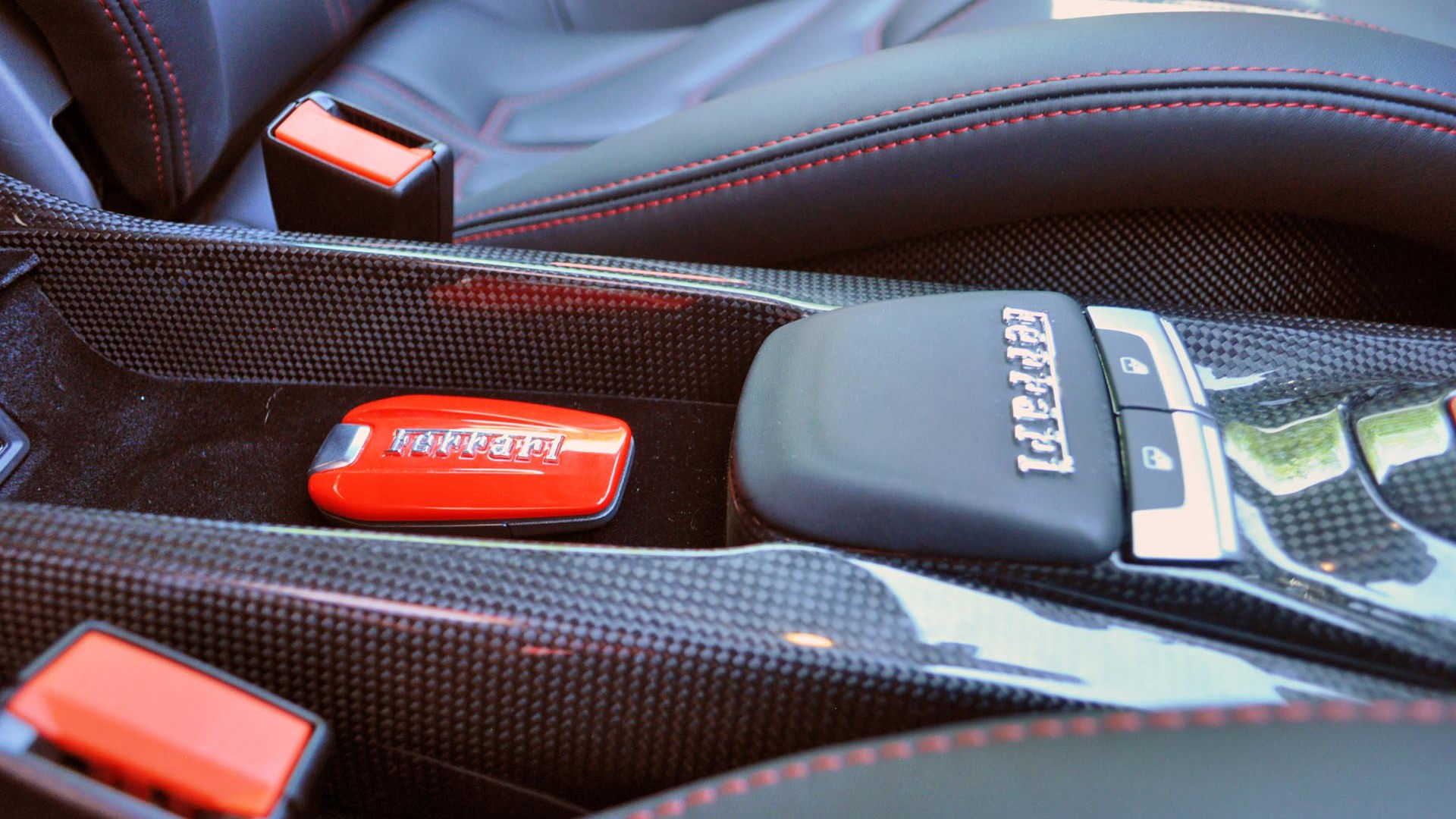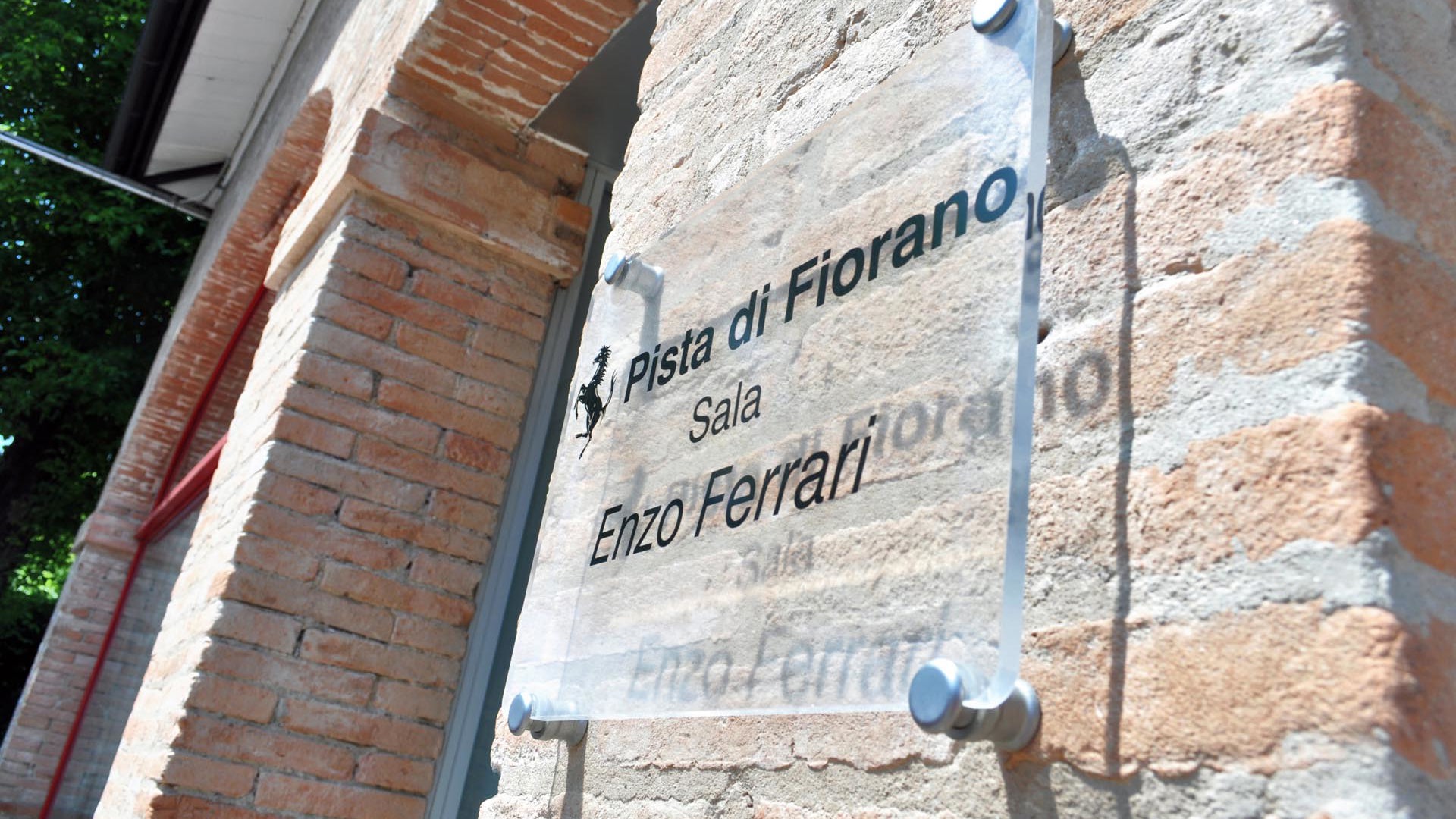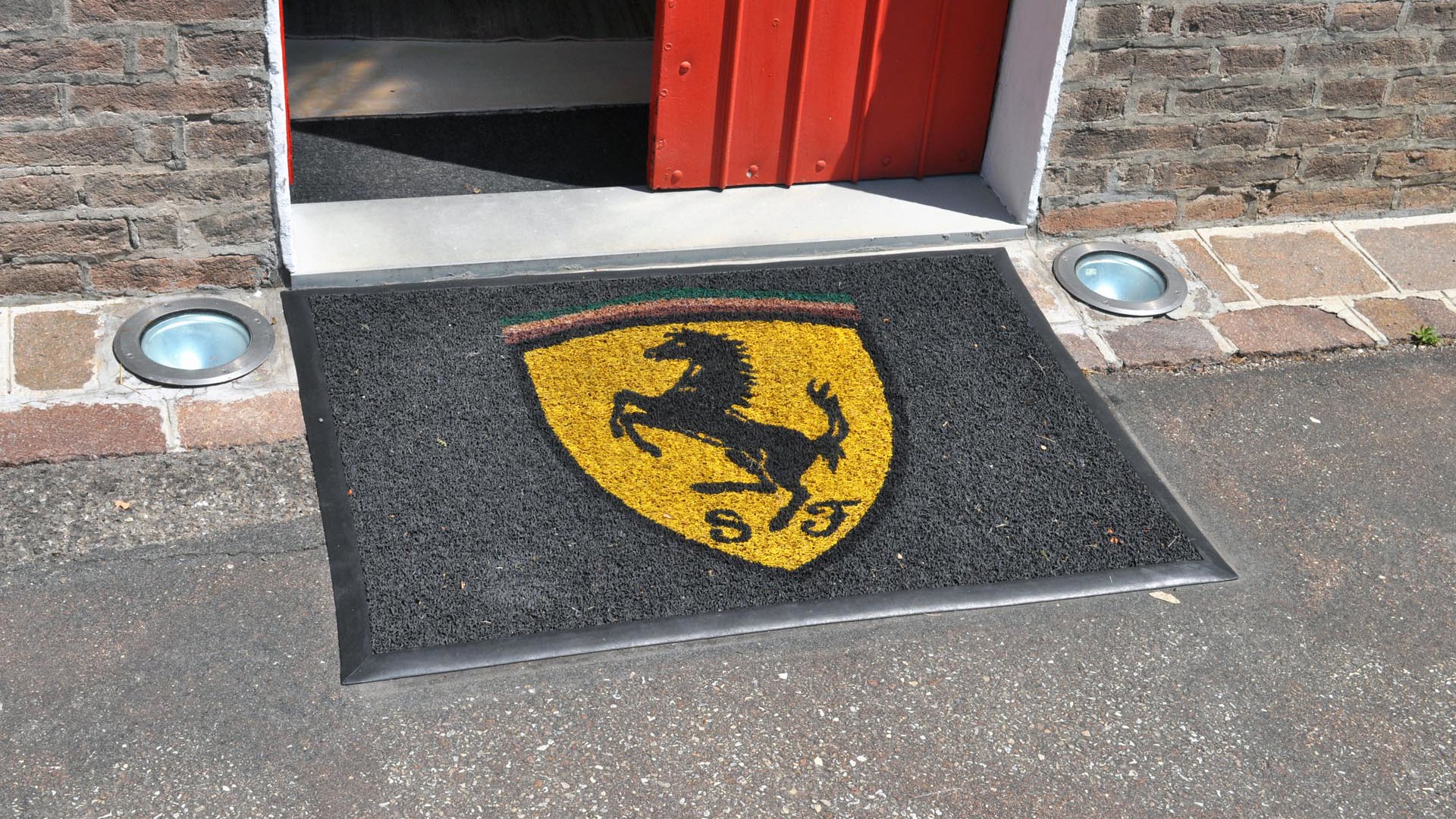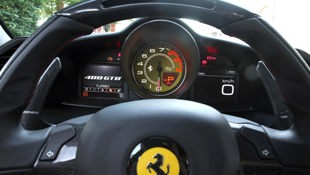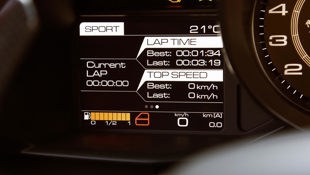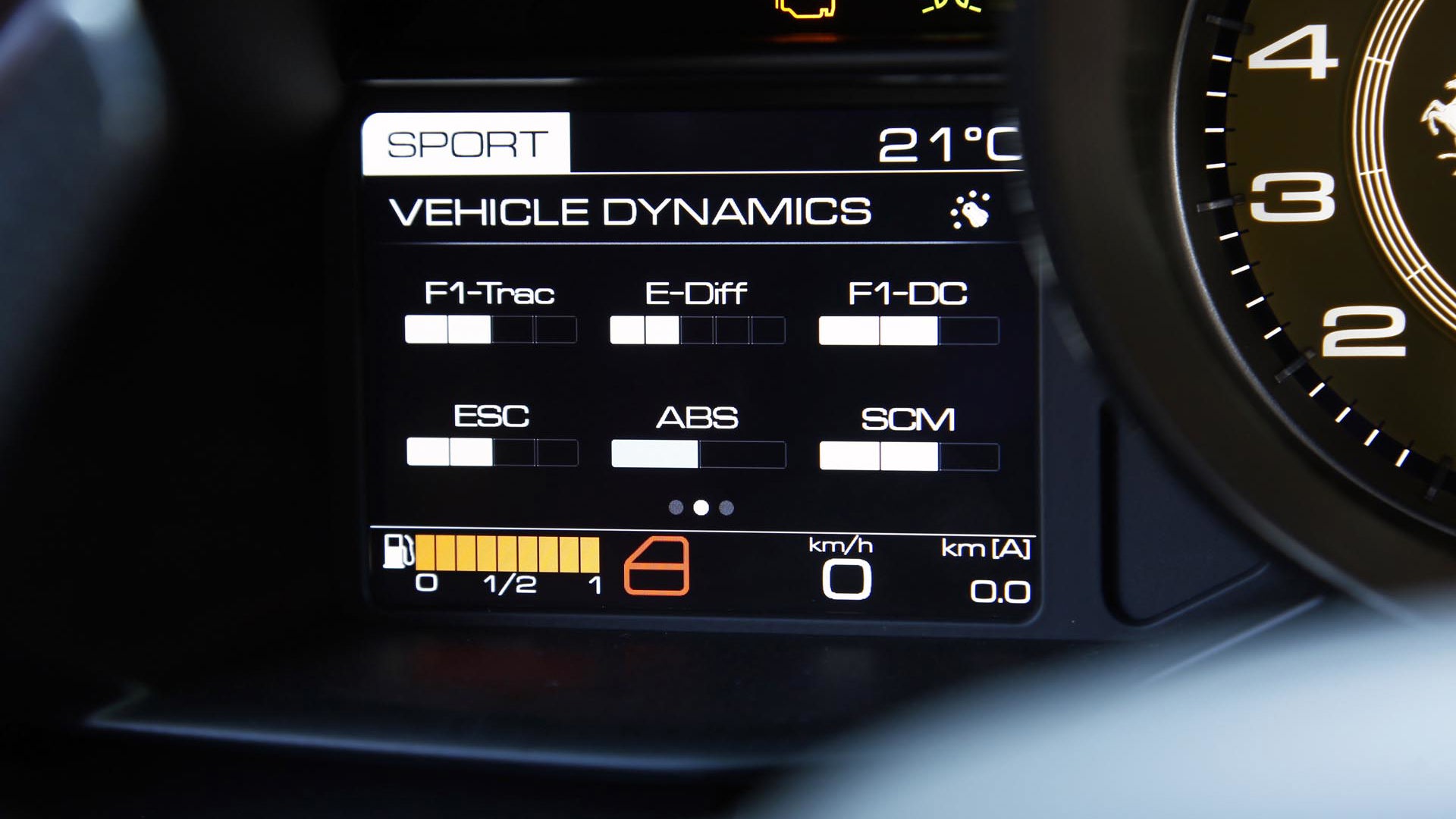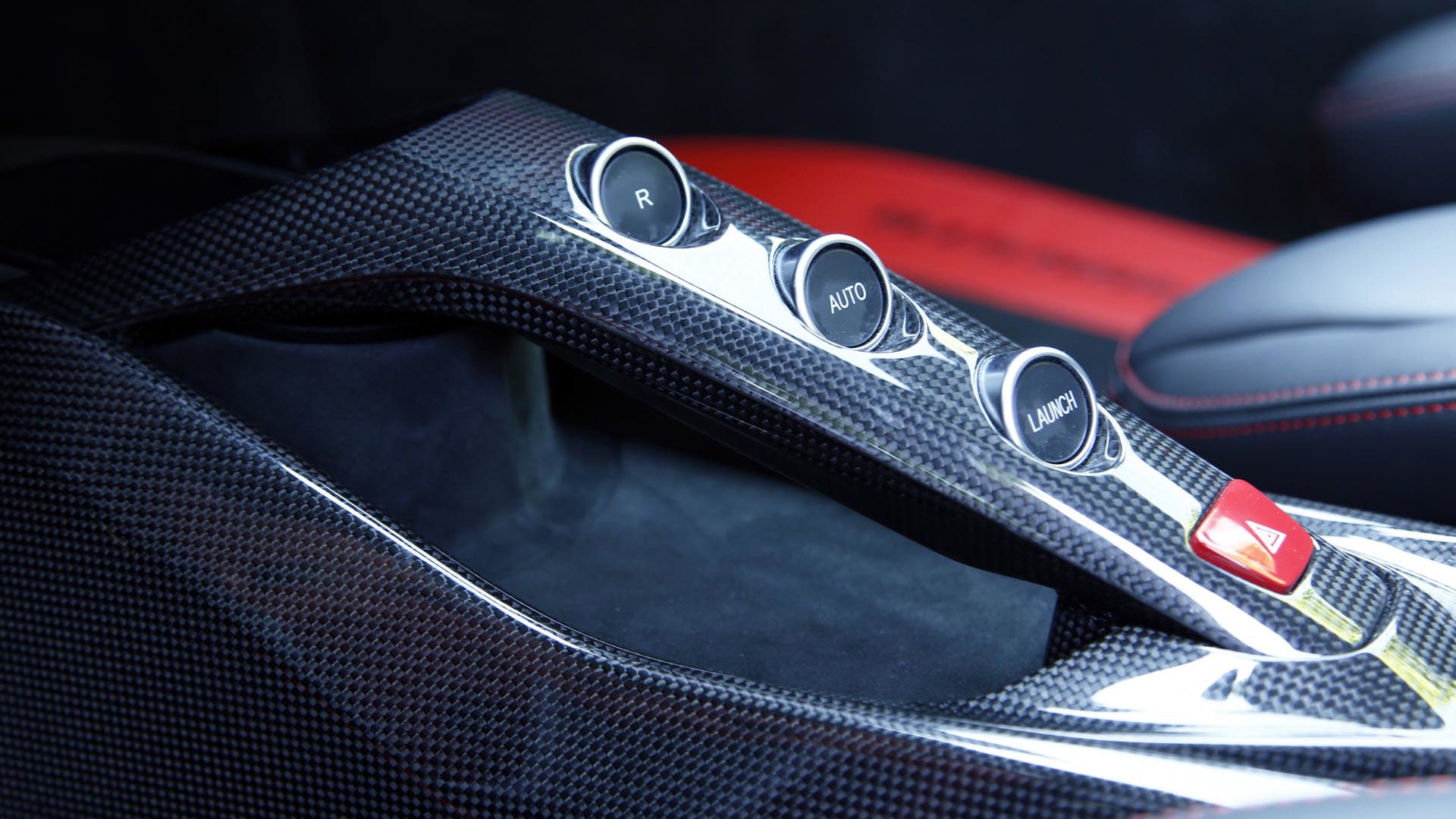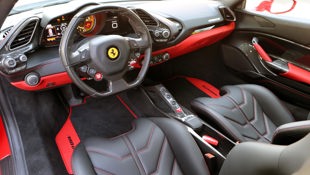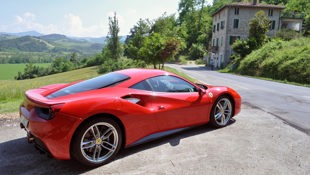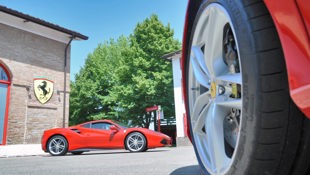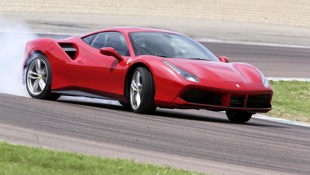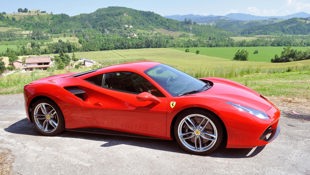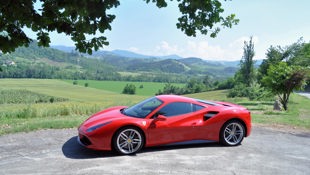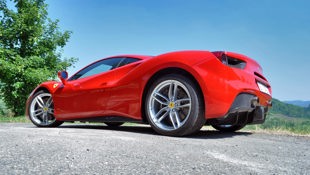Maranello, Italy – It’s not easy to replace a highly regarded lust machine on wheels like the Ferrari 458 Italia. Even five years after the mid-engine sports car’s launch, it still elicits wide admiration – and perhaps a touch of drool – from owners, seasoned auto reviewers and onlookers alike that have experienced its Formula 1–inspired banshee wail.
It’s not easy to replace a highly regarded lust machine on wheels like the Ferrari 458 Italia.
Okay, perhaps some of those onlookers with fingers in their ears were not quite that impressed. But for anyone inside the 458, that 9,000 rpm metallic aria belted out just behind your ears could very well be amongst the most addictive sounds in the auto universe.
But just as modern Formula 1 race cars have been downsized and somewhat muffled by smaller yet more powerful engines, so goes the transformation from 458 to the new 488 GTB. Landing in sweltering 39 degree Celsius late spring temperatures at Ferrari’s factory and headquarters in Maranello, we’re here to experience just how much it has changed from behind the wheel, both on urban roads and the canyons around Modena, as well as on Ferrari’s Fiorano test track.
But before laying hands on the car, first the assembled media folks are ushered into a room for a detailed technical briefing all about the GTB, fleshing out the teasingly limited information presented at this car’s public debut earlier this year at the Geneva auto show. The new twin-turbocharged engine with smaller overall displacement is the obvious main news, its first mid-engine turbocharged model since the range-topping 1988 F40. This engine is similar in displacement and layout to the one in the California T, but with more advanced and performance-oriented materials than its front-engined and much less powerful cousin.
Similar dimensions, all-new aero tricks with familiar cues
The body features some new technical tricks as well, on top of providing sharpened, aero-sculpted surfaces marked most clearly by the aggressively larger nostrils up front, and the pinched, Coke-bottle waist that leads up visually to a bisected air intake in front of each rear wheel. That bisected strake in our tester was done up in carbon-fibre, which to these eyes brought to mind the black strakes of the mid-1980s Ferrari Testarossa and the 348 that followed.
Those trick active aerodynamic black “moustaches” at the front of the 458 that lowered at high speed have disappeared, in favour of an all-new double front wing and “Aero Pillar”. The double wing’s upper section helps channel airflow to the radiator, while the larger lower lip increases the aerodynamic vortices that help create low pressure and therefore downforce suction at speed. And of course, stylistically, the new more aggressive front end resembles to the double stanchions of an F1 car’s front nose.
In the rear lies what Ferrari calls its “blown spoiler”, a new element that channels air from the base of the rear window through the rear bodywork and also helps boost downforce, while reducing the size and therefore aero drag of the rear spoiler. The only remaining active aerodynamic element on the 488 from its predecessor is an underbody flap by the rear diffuser that opens under acceleration and high speeds, and closes for more downforce under braking or while cornering. Even the door handles are specially sculpted to help channel air into the rear air intakes, jutting from the body in a seemingly anti-aero shape. But up close, do they really have to look and feel so flimsy?
This is a quarter million dollar exotic car, after all.
Ferrari design director Flavio Manzoni said the overall shape of the 488 is meant to underline the new turbo engine of this car. Its basic dimensions are similar to the 458, as the hard points of the roof and floor height stayed constant, though the roof is the only body panel that remained the same. Overall, 85 percent of the parts of the car are completely new, says Ferrari.
New twin-turbo engine defines the 488 GTB
Tightening emissions and fuel economy regulations globally meant Ferrari had to make this new engine more fuel efficient, but more importantly it wanted to get back on top of its class in terms of overall power, a podium the 458 relinquished to newer rivals like the McLaren 650S and the Lamborghini Huracán. Now with 670 Euro-rated horsepower, it trumps both those cars, the Lambo by a whopping 60 ponies, courtesy of a smaller but now twin-turbocharged 3.9L V8 that also produces a healthy 562 lb-ft of torque.
All this power translates to a 0-100 km/h time of three seconds flat, down from an official 3.4 second time for the 458. Ferrari doesn’t get more specific than “greater than 330 km/h” when it comes to top speed, which is slightly higher than the “greater than 325 km/h” 458 Speciale, which will still be on sale when the 488 launches this fall in North America. This engine remains a flat-plane crankshaft design, as per long Ferrari tradition, but now adds a turbocharger for each crimson-red cylinder bank.
So how does a power plant the same size and layout of the one in the California T produce an extra 110 hp here? It’s a combination of more aggressive hardware and detailed fine-tuning: each twin-scroll turbine is about eight mm larger, thus pumping more air through the entire system. The turbos themselves are mounted on unique easy-spin ball-bearing shafts, while a new titanium-aluminum alloy make them notably lighter – and quicker to spool up than a senator’s expense report.
The entire drivetrain is about 15 kg heavier than before, but not only is the overall power to weight ratio much higher, the engine sits five mm lower than what was already a low car before. This helps handling by lowering the overall centre of gravity, but it also means that even slight inclines and road bumps can produce that sickly sound of exotic Italian aluminum scraping the ground.
“Manageable performance” was the key objective overall, proven at Fiorano and on the road.
Also helping handling is a next-generation version of the Side Slip Control System (SSC2) launched last year on the 458 Speciale, which now integrates the active MagneRide suspension control into its magical formula that allows the traction control (F1-Trac) and stability control systems to allow the 488 GTB driver extra servings of tail-out fun, especially with the steering wheel’s manettino set to Race or CT Off modes.
Race mode was my preferred choice on Fiorano, as the SSC2’s greatest trick is holding off on the intervention of traction and stability control systems when you provide a touch too much or too quick of a right foot, before minutely dialing it back just enough to continue your confidence-inspiring power slide.
And for the ultimate in lurid tail-out shenanigans, there is an even more extreme ESC Off setting, for those who’d really like to envision themselves in the annals of potential F1 drivers that never made it (even remotely) close.
What amazes most on the track is how quickly the 488 GTB’s new engine rushes up to redline. The massive thrust it generates means you’re still accelerating hard when you run into the rev limiter, which I inadvertently did a few times. So a close eye on the prominent tach or on the optional red lights emblazoned on the top of the steering wheel is helpful to keep pace with the fast-forwarded proceedings, because short low gears help provide a muscular, responsive feel to this engine that hides any turbo tendencies to peakiness.
Ferrari says you can reach redline in fourth from a standstill in just six seconds, and I can believe it. If in half that time you’re already at 100 km/h by working that seven-speed dual clutch paddle shift transmission and its launch control system, by six seconds you’d easily be close to if not beyond double that. In a time frame when many legitimately sporting cars are just reaching 100 km/h from rest.
The sound emanating from those dual exhausts is no longer a mechanical ode to high-pitch Formula 1 V10s and V12s, but a deeper, more refined thunderclap of an engine note. Yes, there’s still an addictive quality to working the engine hard, but it’s in a lower, perhaps less distinct octave than in the past, though you won’t be mistaking this flat-plane high-revving engine song for a Corvette V8 any time soon.
On the road, perhaps the most immediately noticeable trait about the 488 is its steering, which is nicely weighted and responsive, but not as shockingly quick to respond as its 458 predecessor. This actually makes it easier to drive in town when you first set out, as you’re not narrowly missing curbs through normal but suddenly way too early turn-in. But it also means that other car’s responses won’t feel so surprisingly slow after a long stint behind the Ferrari’s wheel.
Or put another way, the 488 GTB’s on road handling is still spectacular, but a touch less unique than before.
Interior largely identical, with some new additions
With major styling, engine and dynamic changes, the interior was left mostly alone from the previously artsy design free of any instrument panel. There are some upgraded features, such as a new, simpler entertainment system from the Cali T, a 12 speaker JBL surround sound system, and an available speed, g and engine rev display for the passenger so he can see exactly how much you’re pushing it, or what action the traffic ticket will punish.
Other new options include a unique twist on the usual Ferrari red (Rosso Corsa Met), the Met designating an extra “surprise effect” which we never quite figured out, to go with 16 standard colours, 15 optional colours, and 4 other special colours. But of course, for the right price, Ferrari will blend whichever colour you desire, as will other exotic luxury automakers. That’s to go with six different wheel options, meaning there will be lots of potential to make your Ferrari 488 GTB a one-of-a-kind artistic and engineering masterpiece on wheels.
| Competitors: Audi R8 V10 McLaren 650S Lamborghini Huracán |
And still a lusty one, at that.
Pricing: 2016 Ferrari 488 GTB
Base price (est.): US$250,000 in Canada
